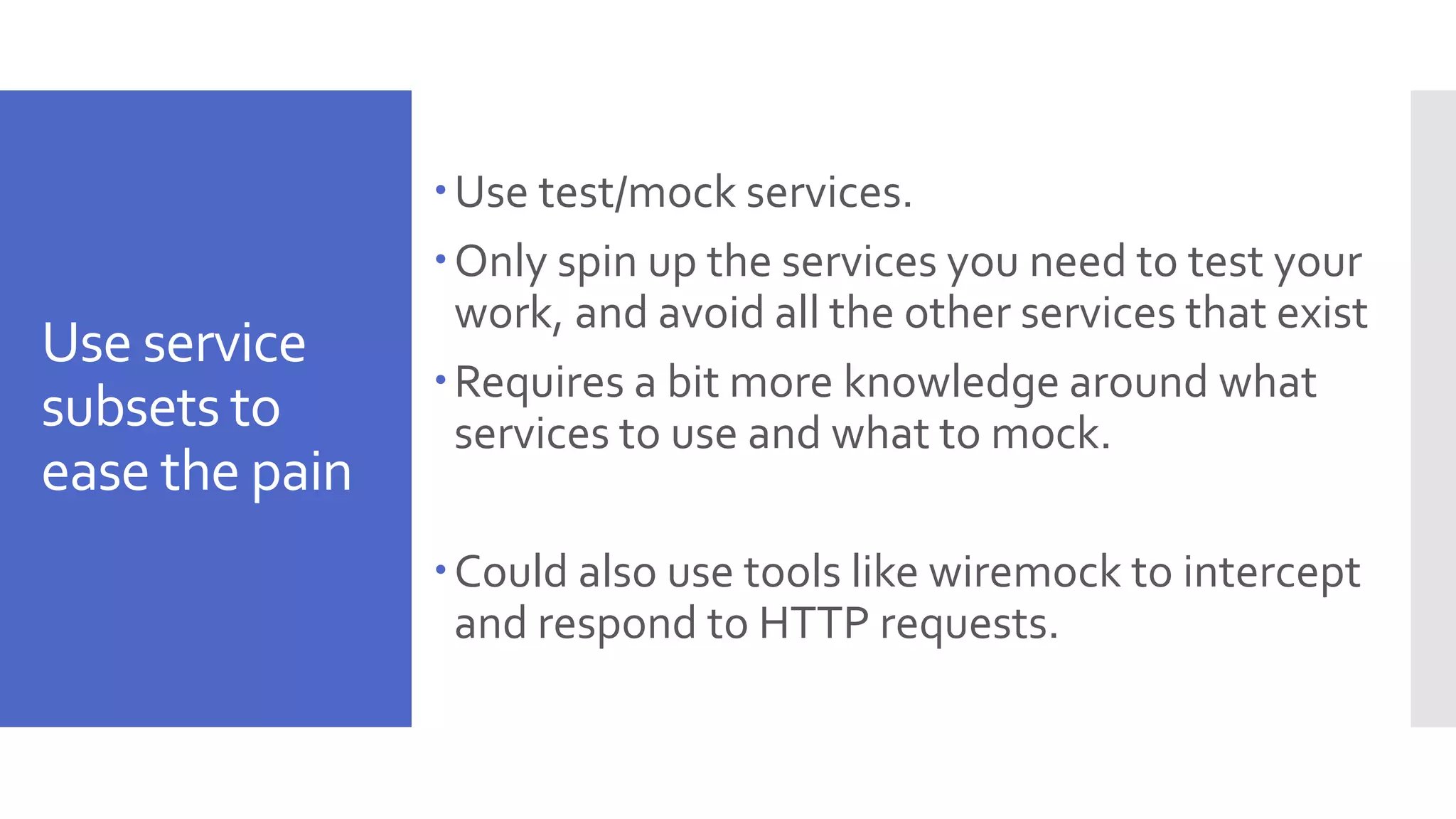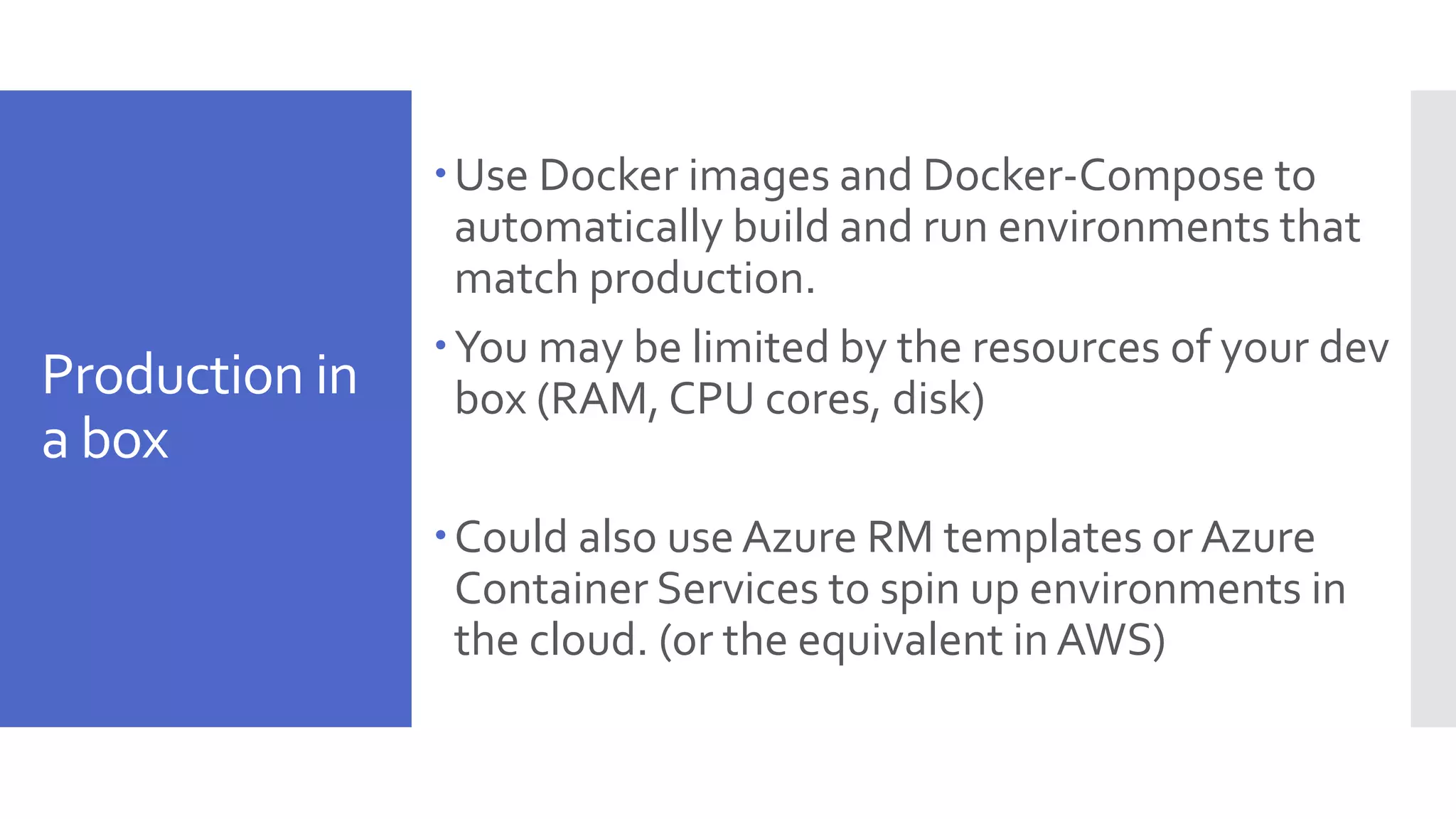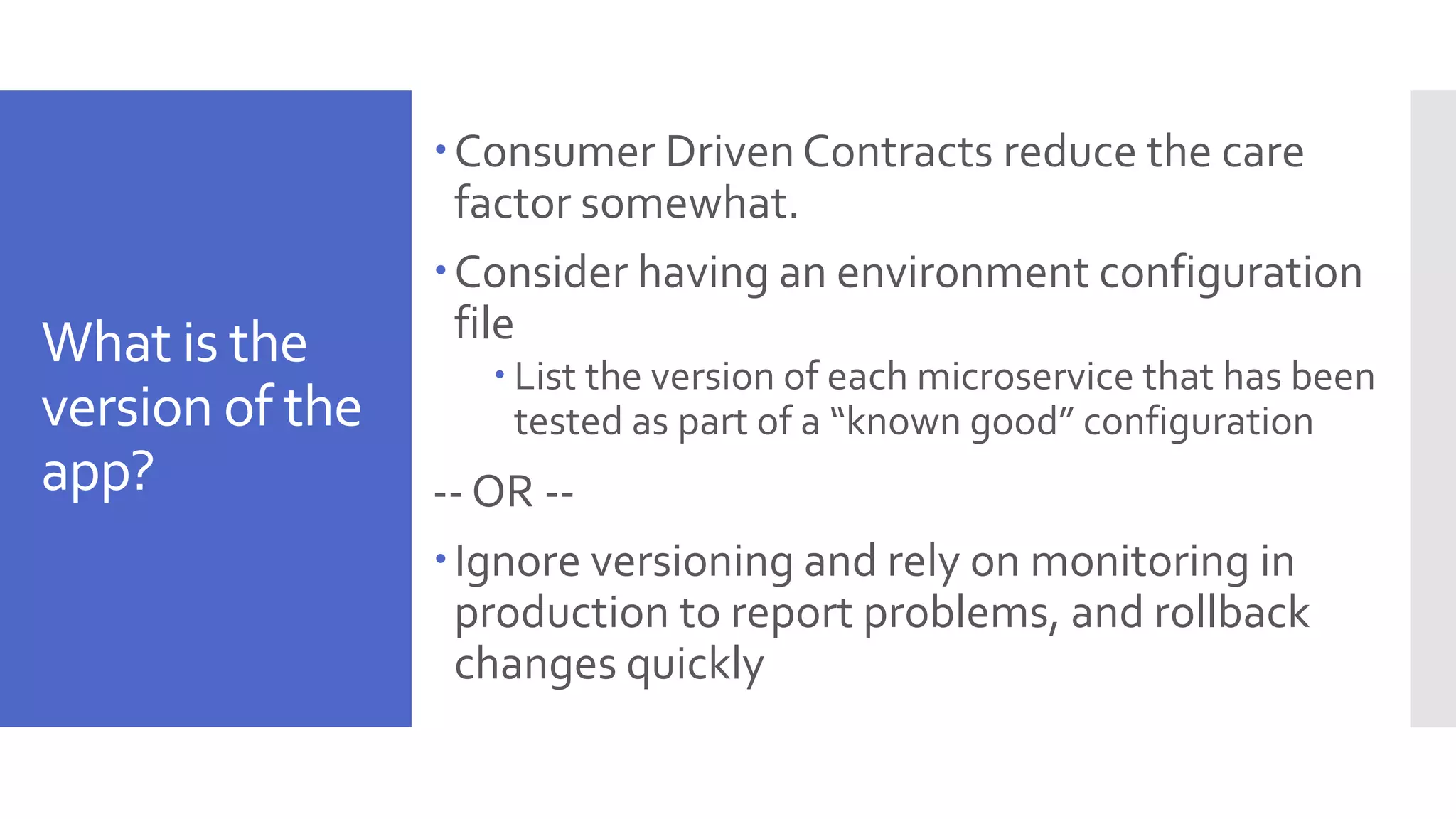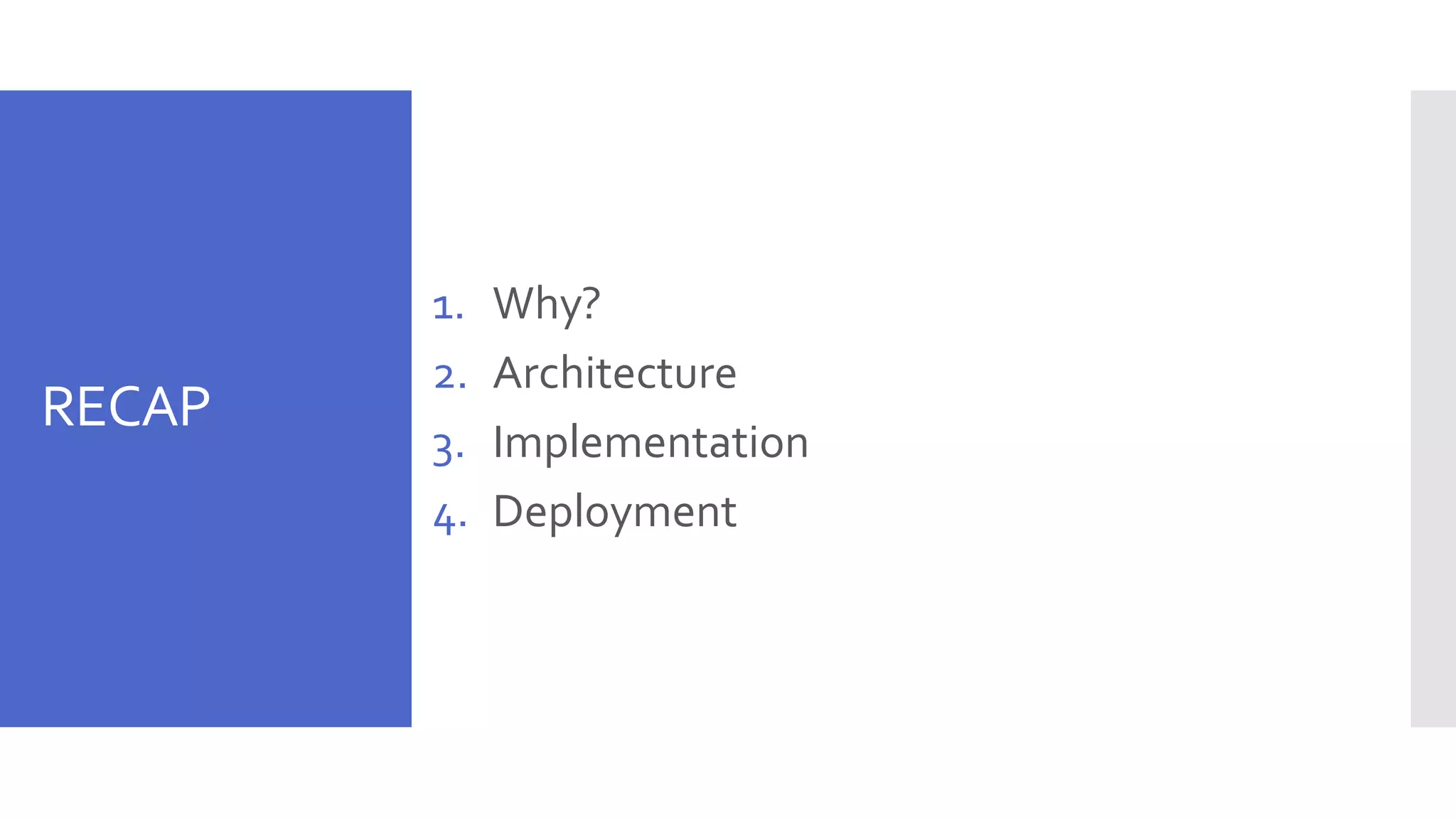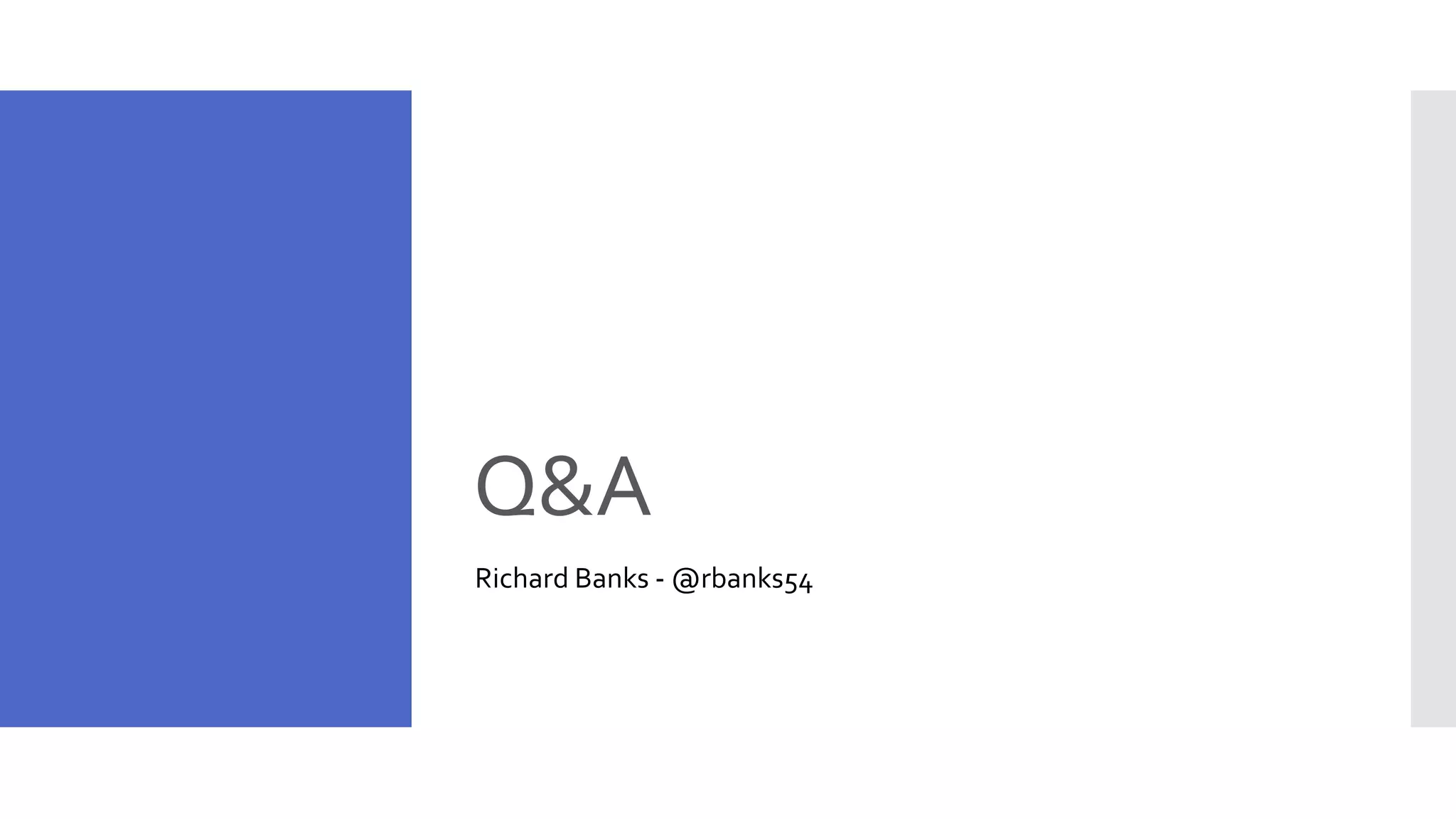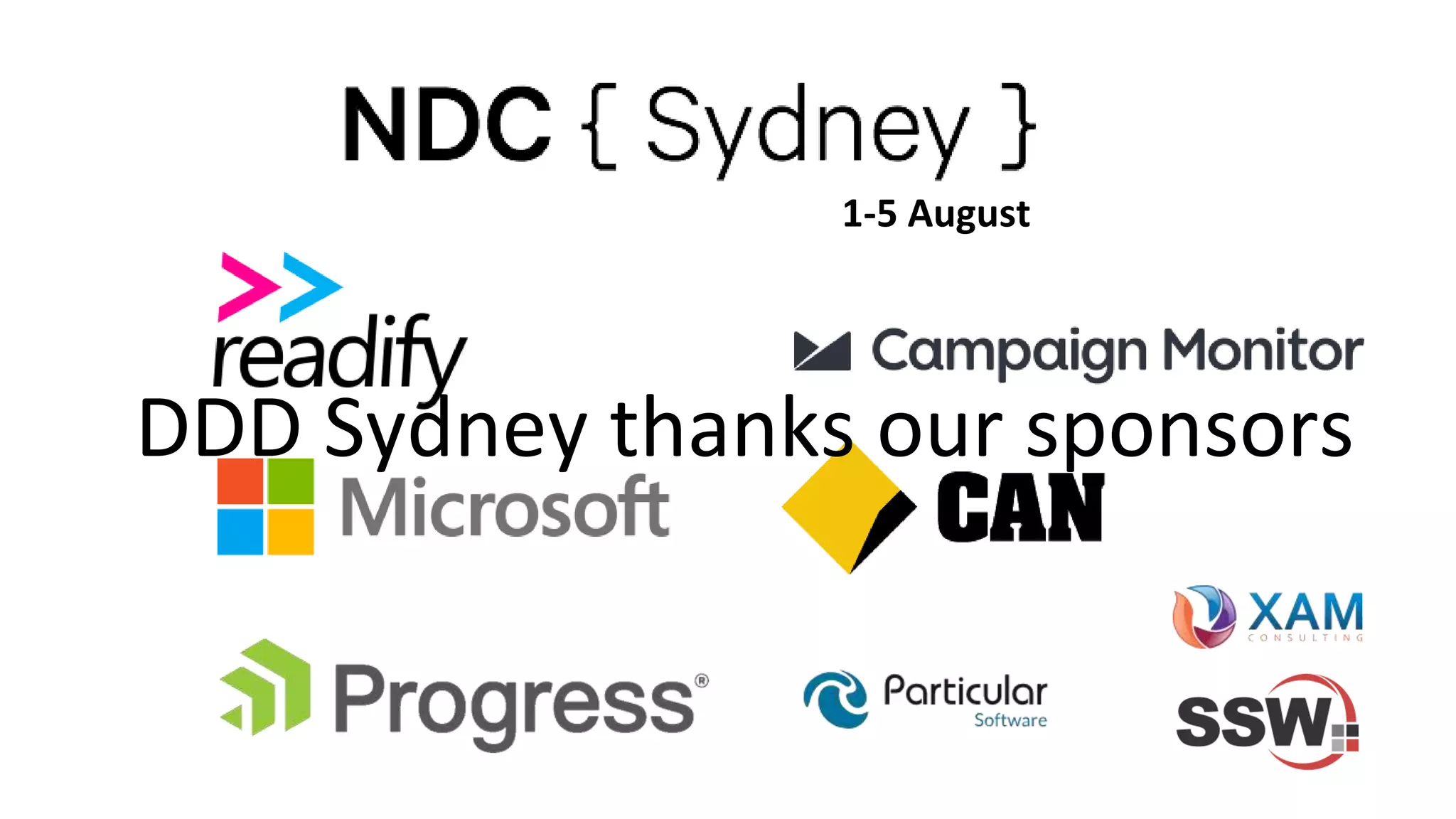This document provides an overview of architecting microservices using .NET. It discusses why microservices are used, common architecture patterns, and implementation considerations. Key points include: - Independent, loosely coupled services that are fault tolerant and easy to scale are goals of a microservices architecture. - Communication between services should be kept simple, using either synchronous HTTP or asynchronous messaging. Synchronous calls can lead to temporal coupling so circuit breakers and failure handling are important. - Domain-driven design principles like bounded contexts and separating queries from commands (CQRS) can help define appropriate service boundaries and responsibilities. - Event sourcing avoids shared state and two-phase commits by persisting a sequence of events rather than
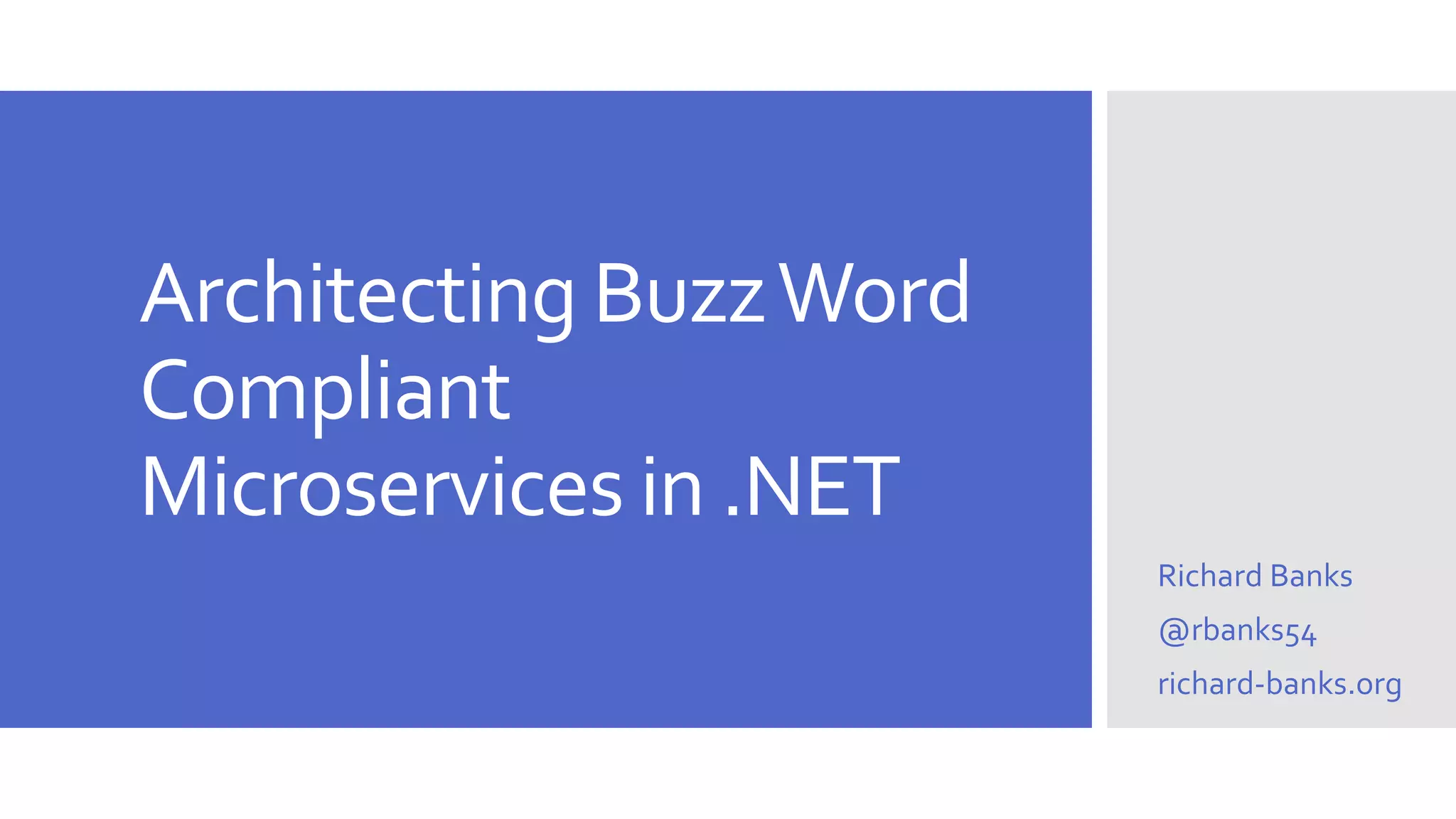


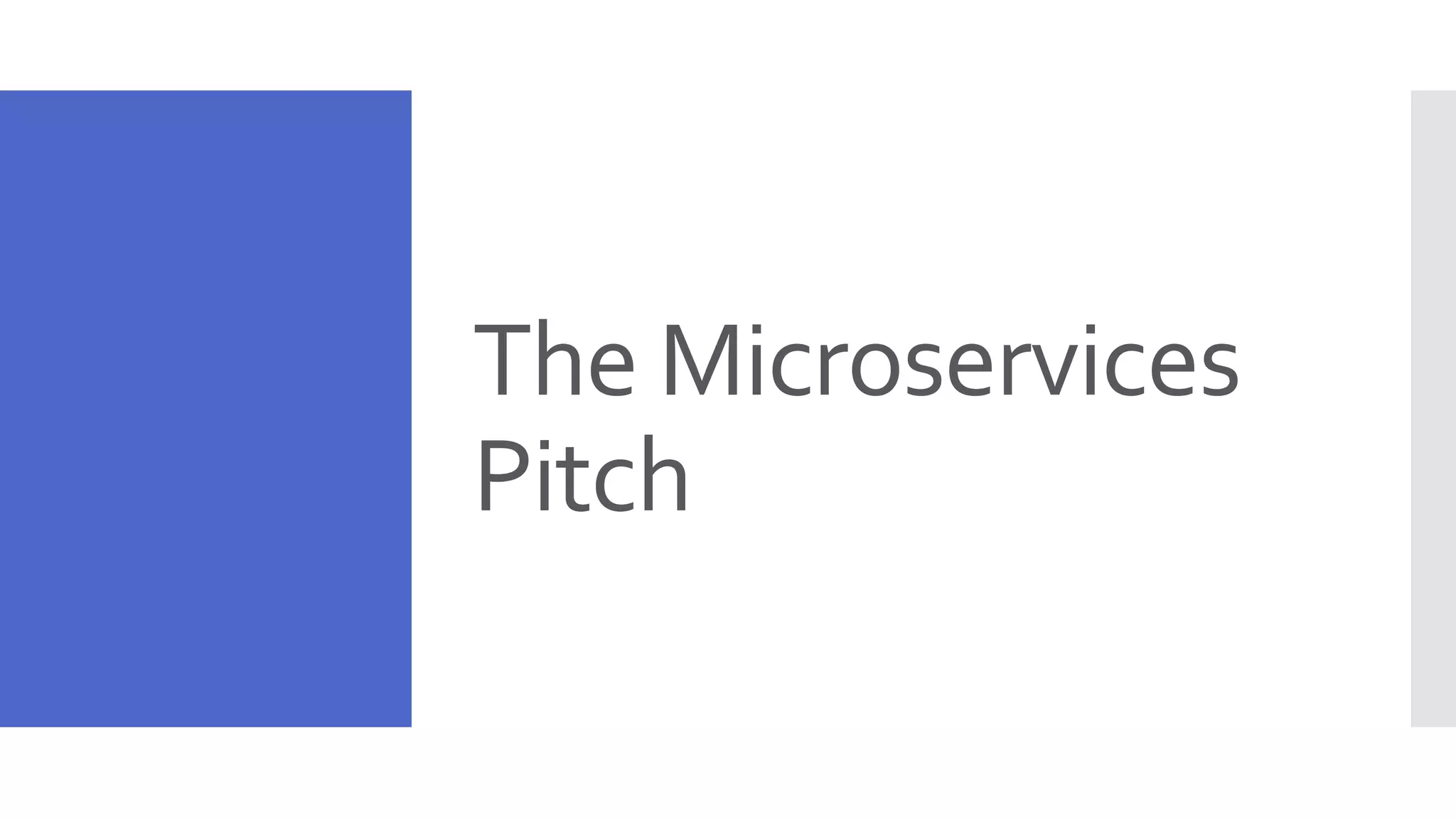
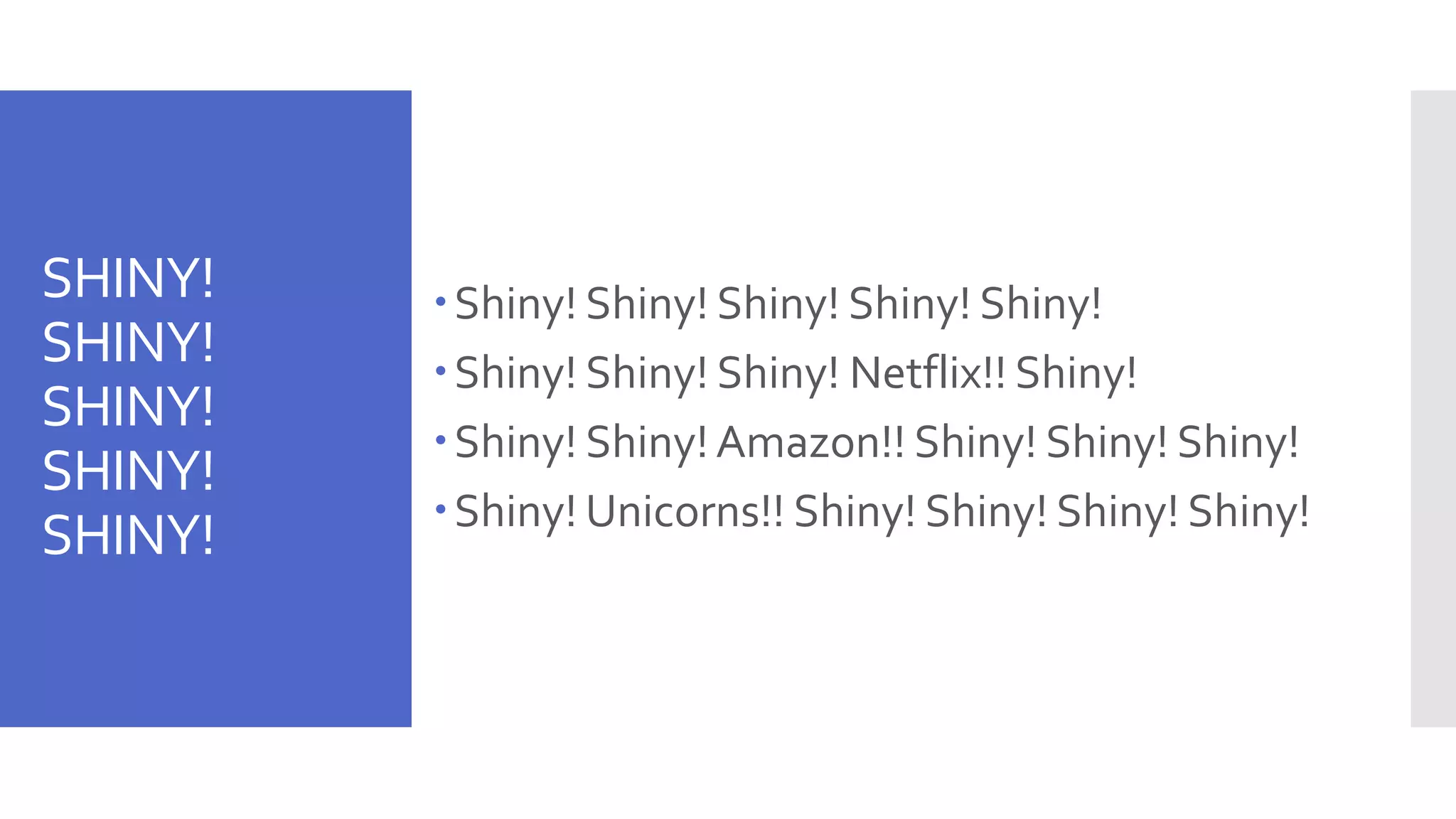

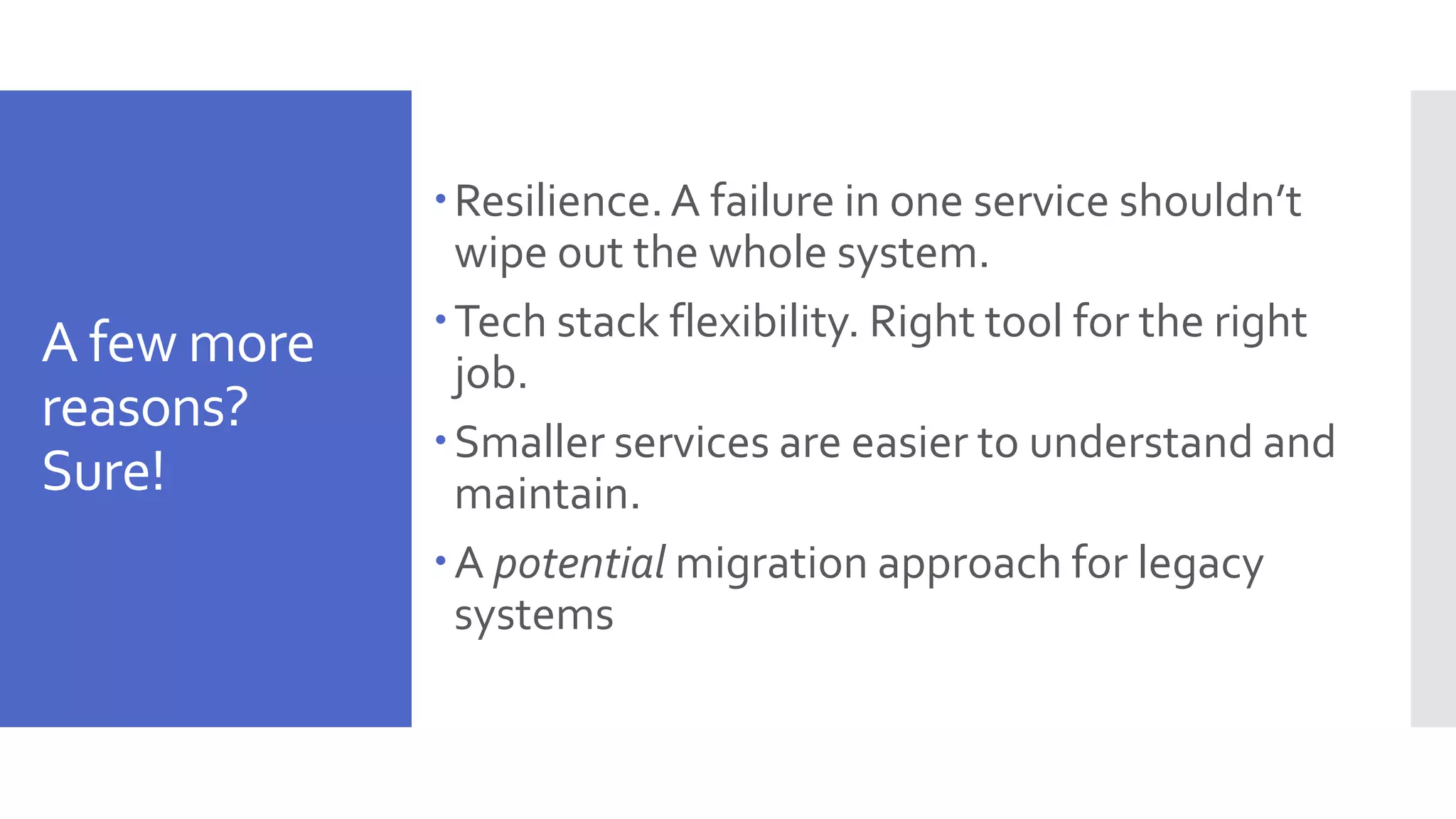

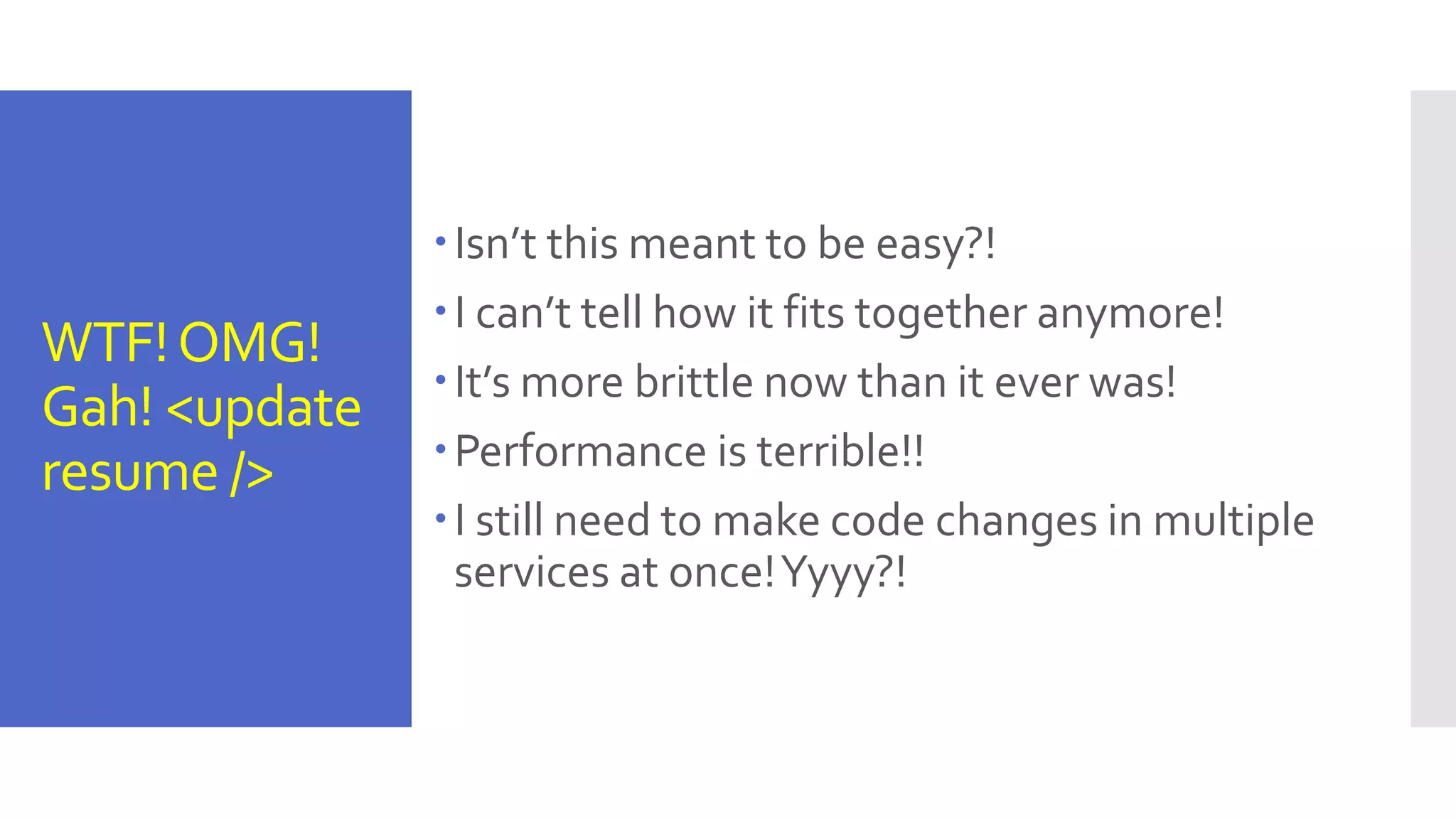

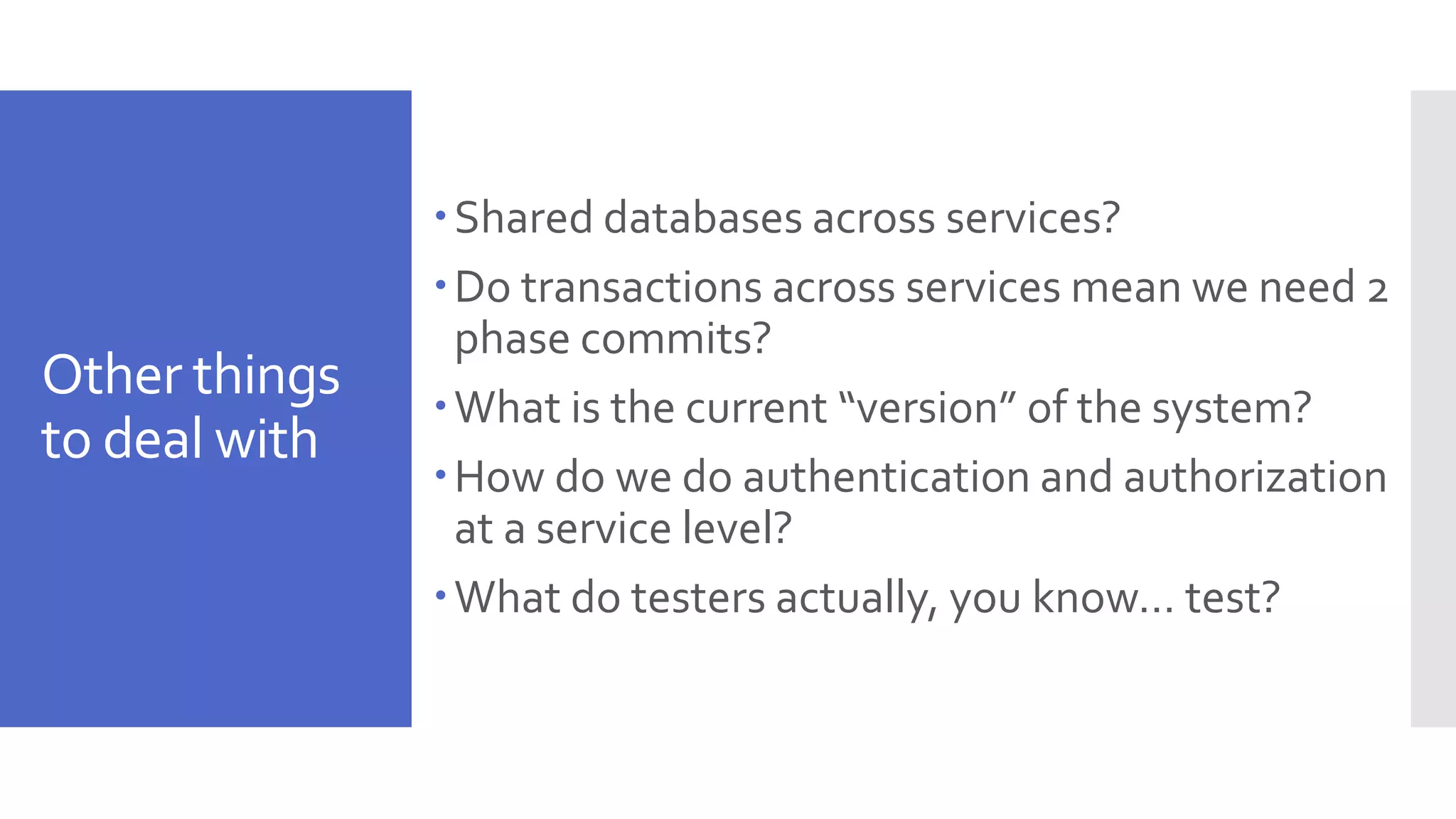
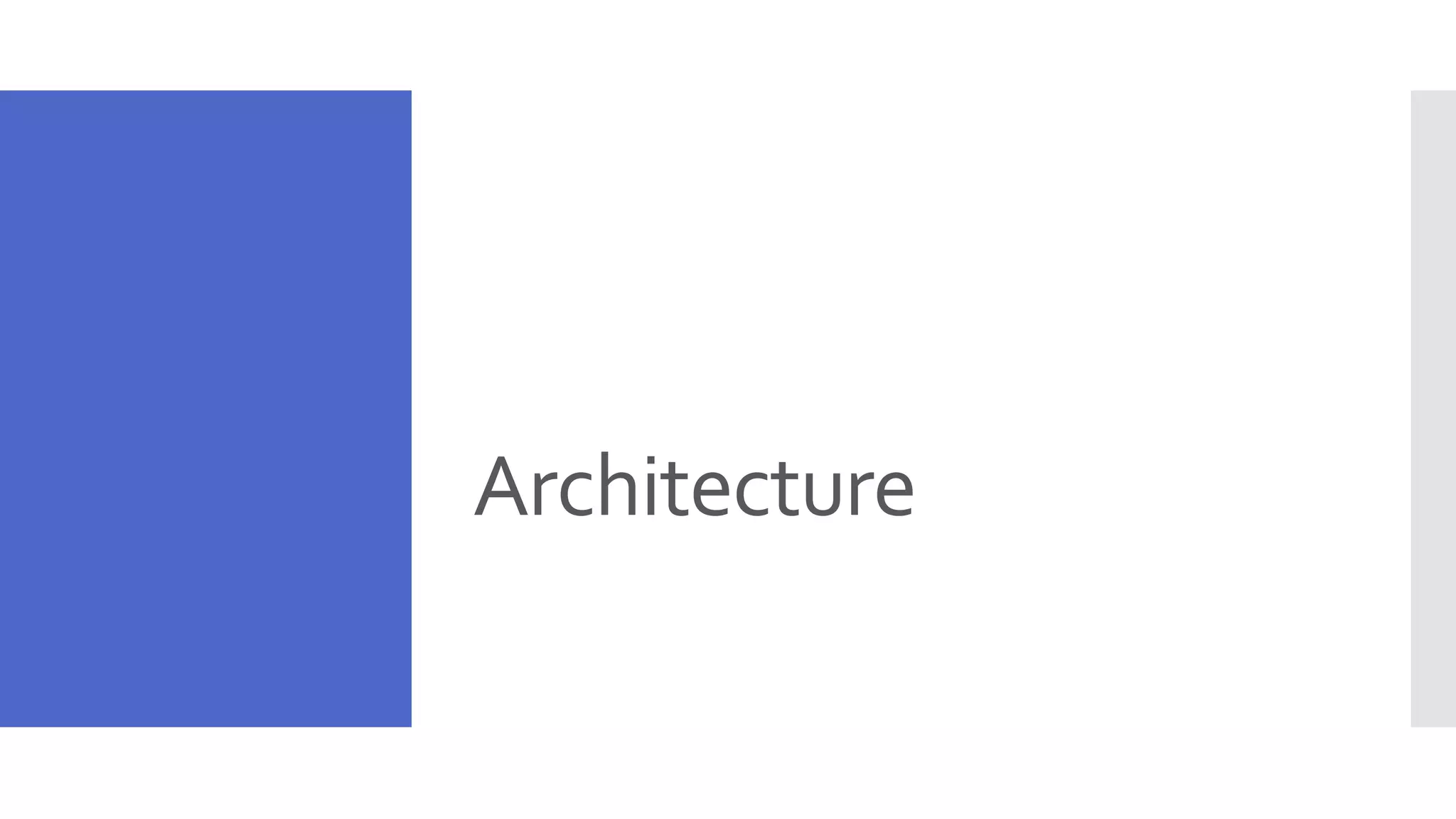
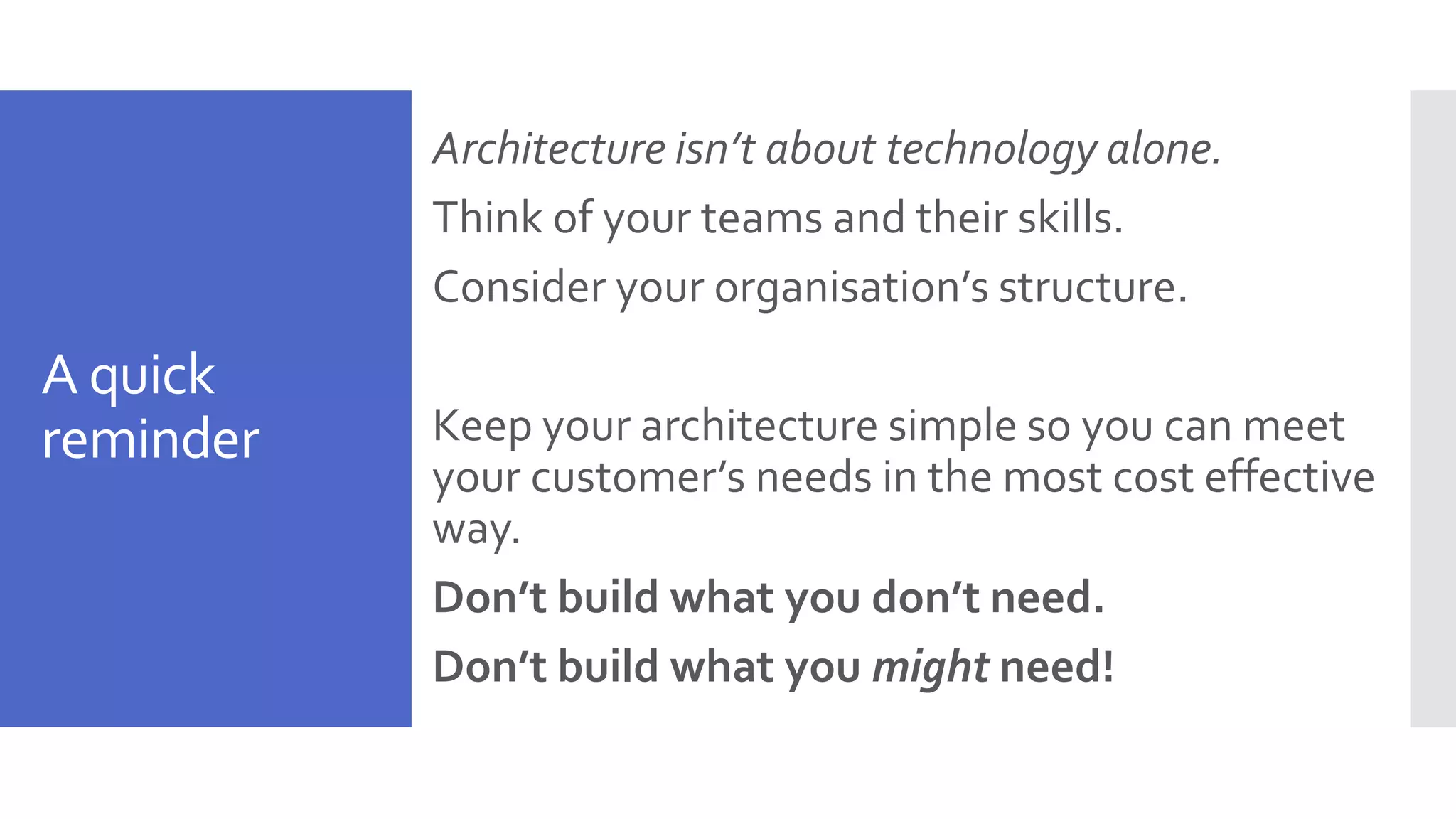

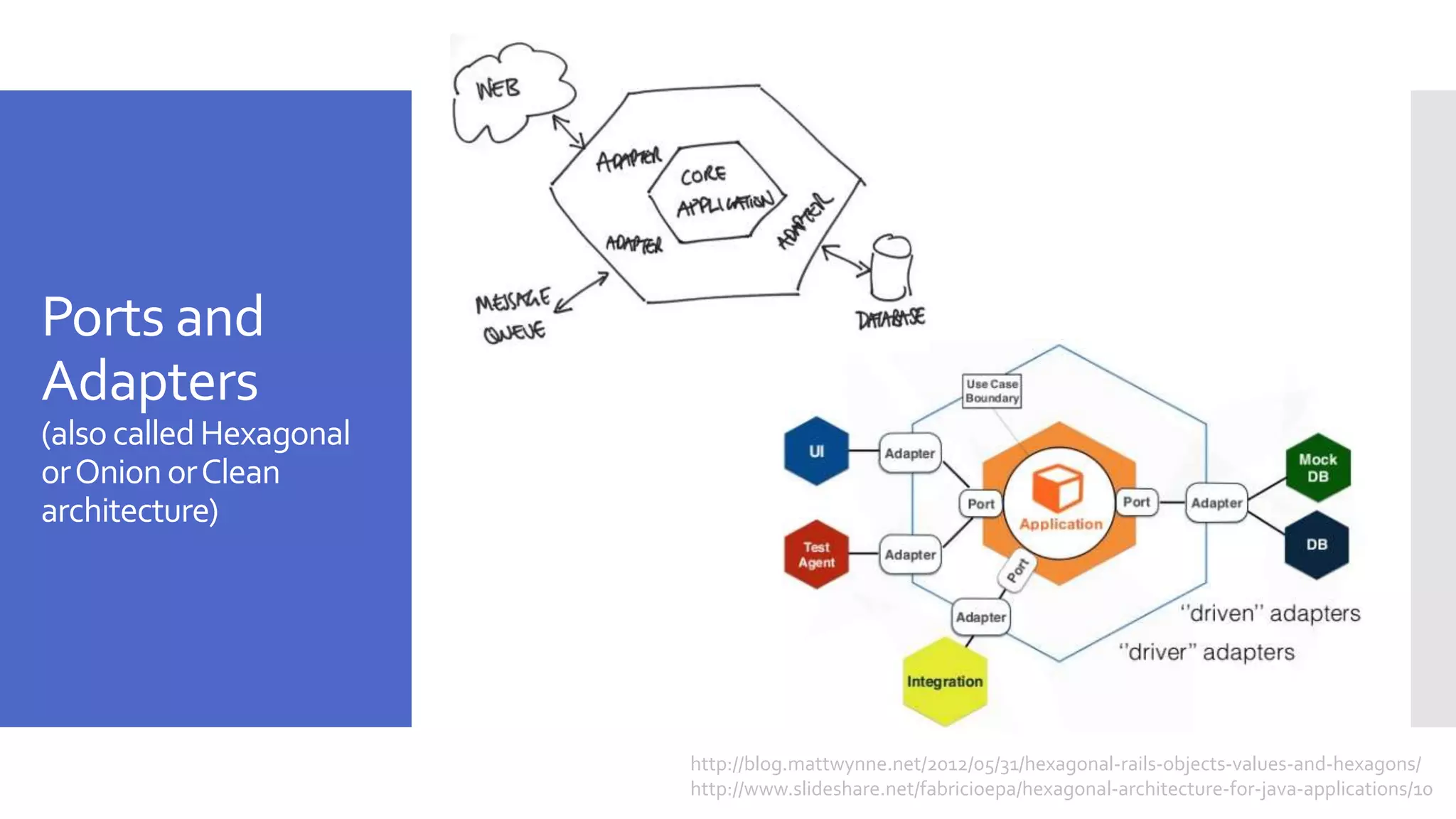
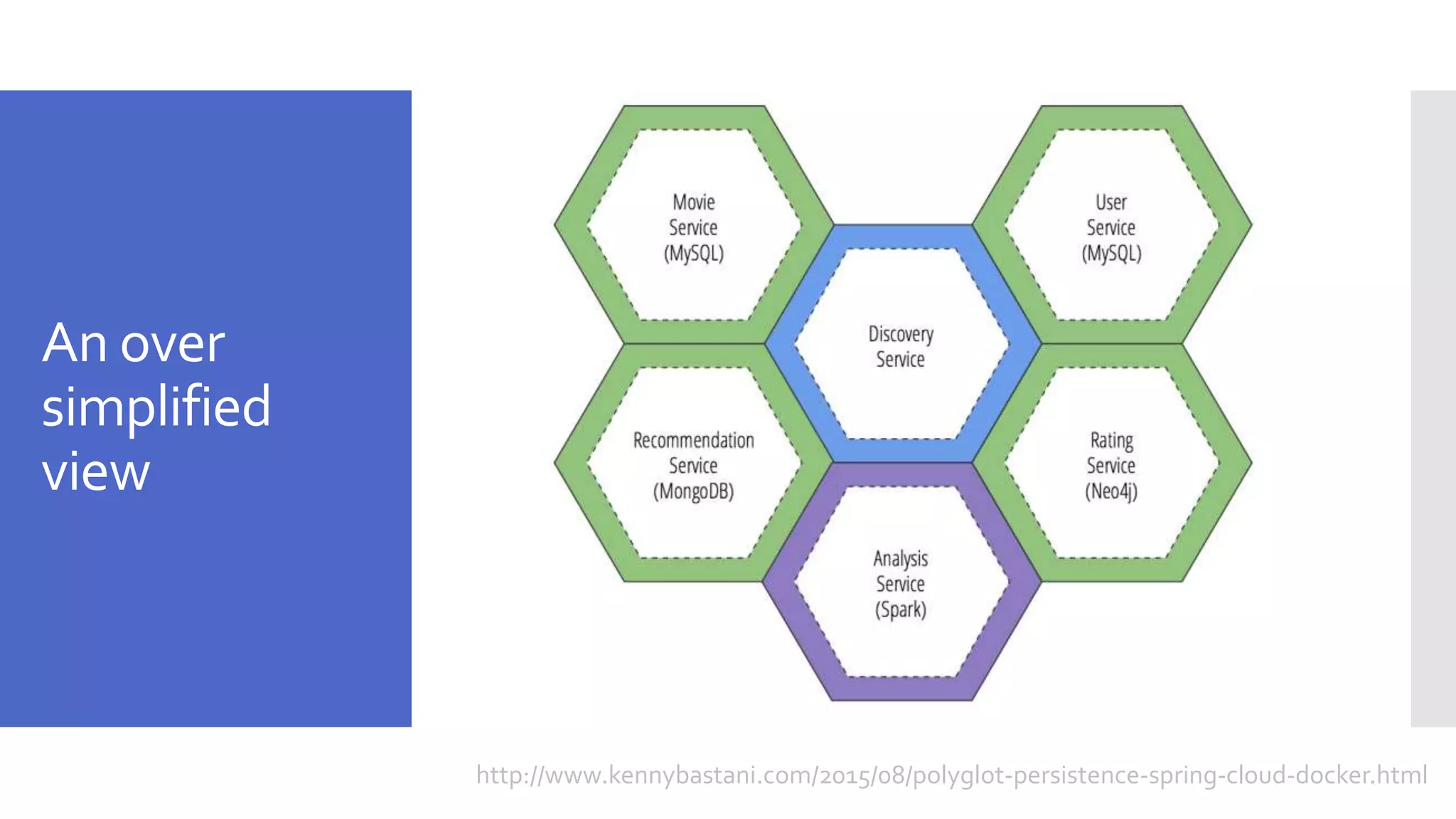
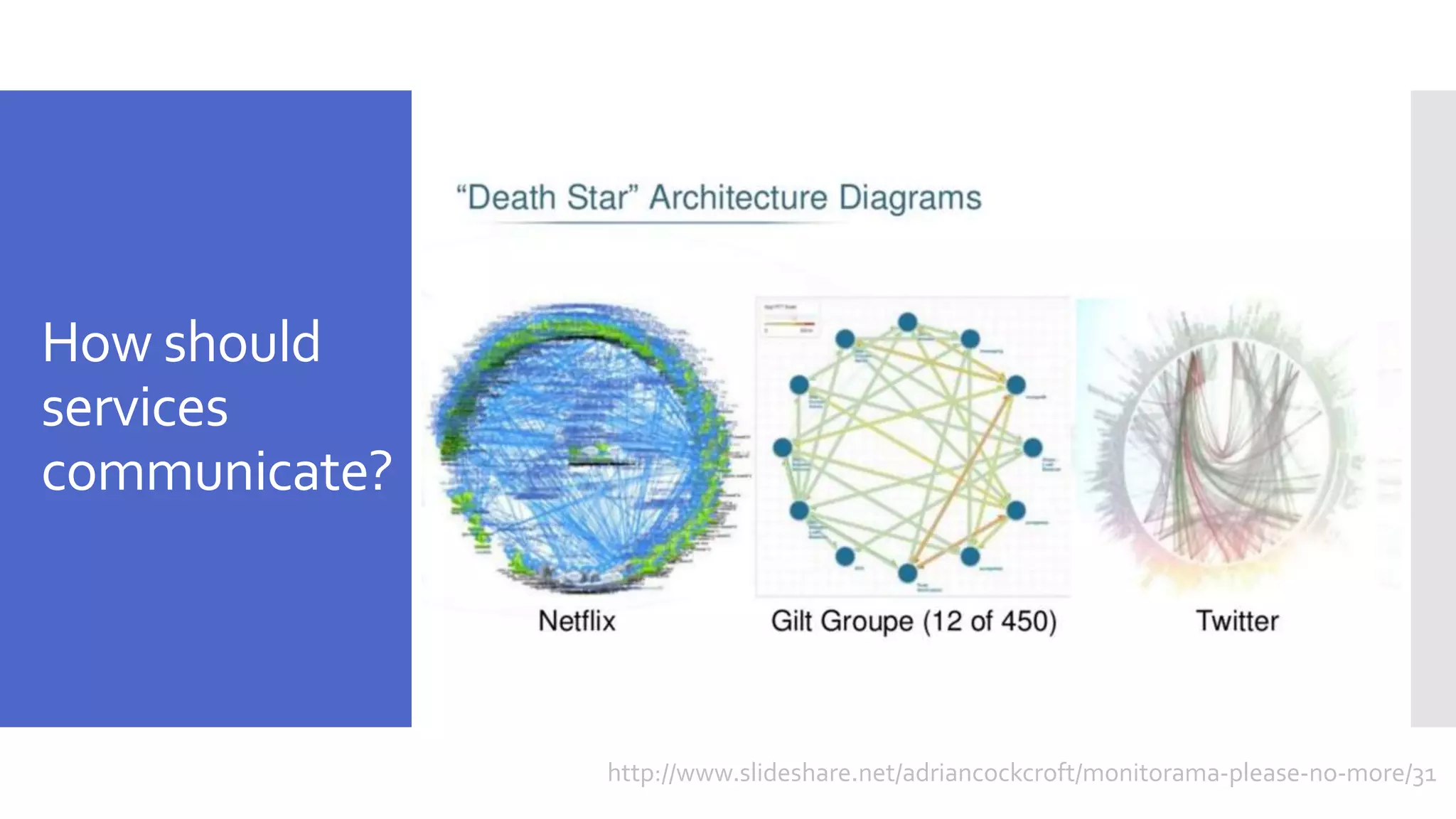
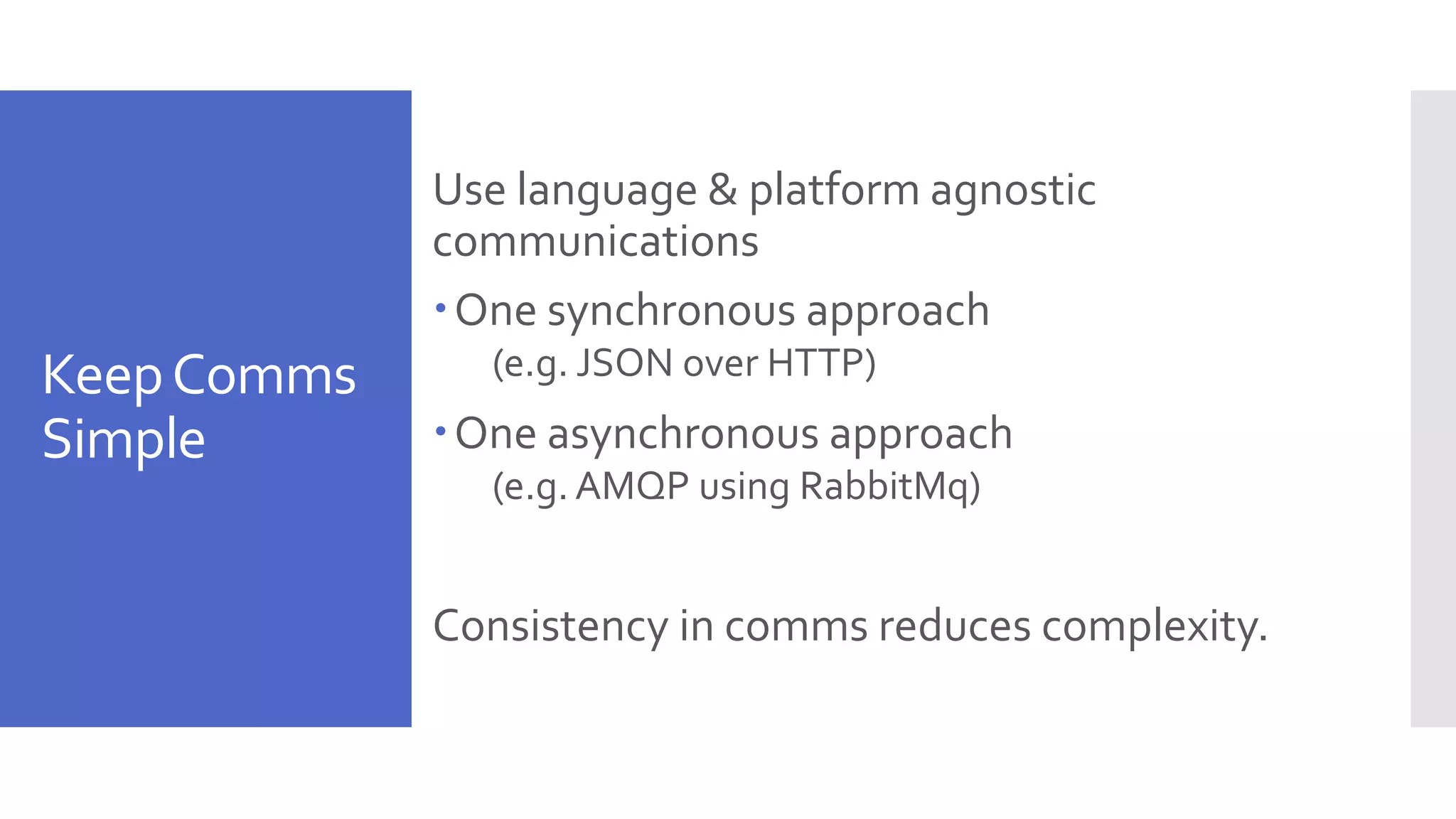

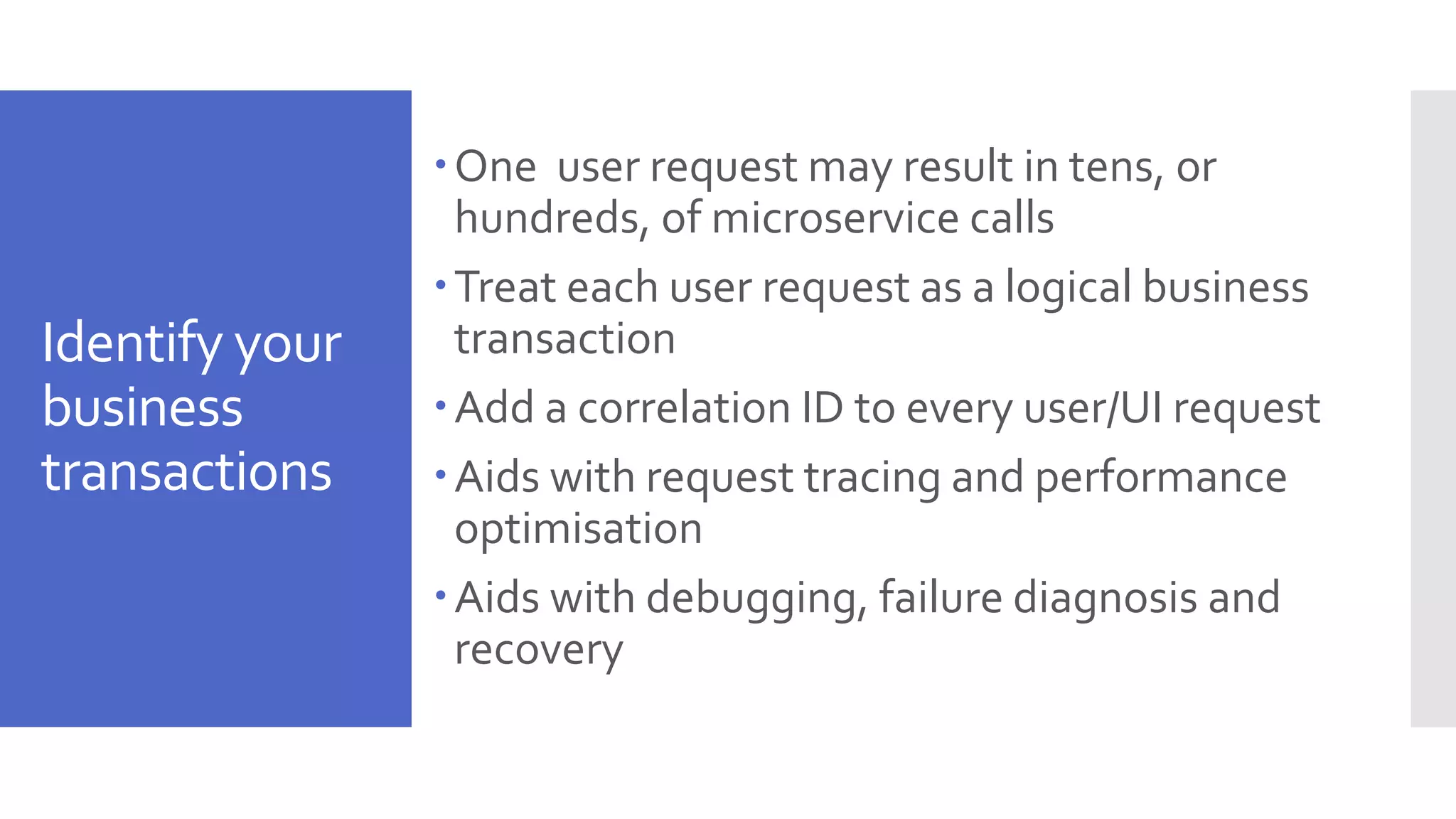
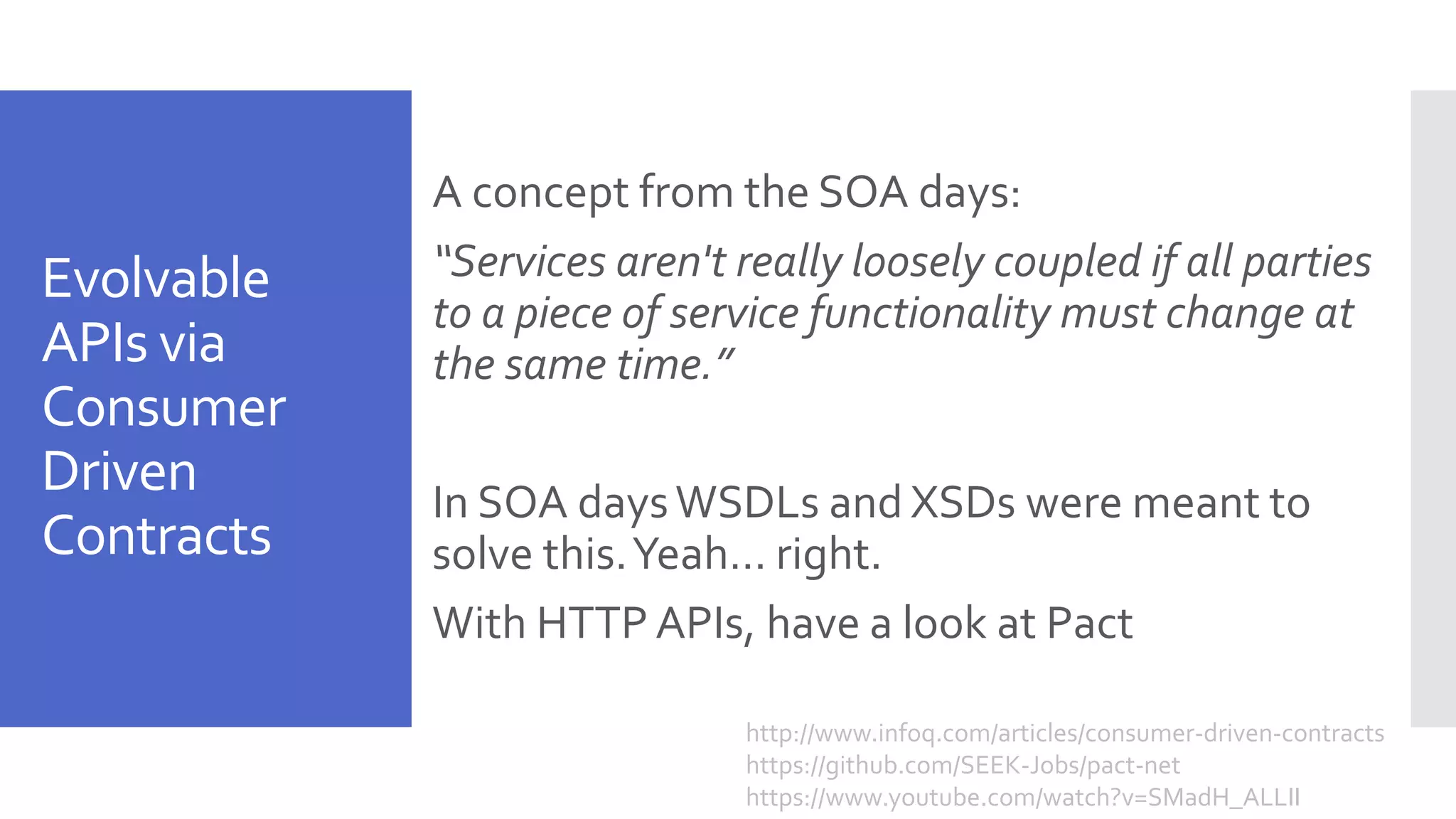


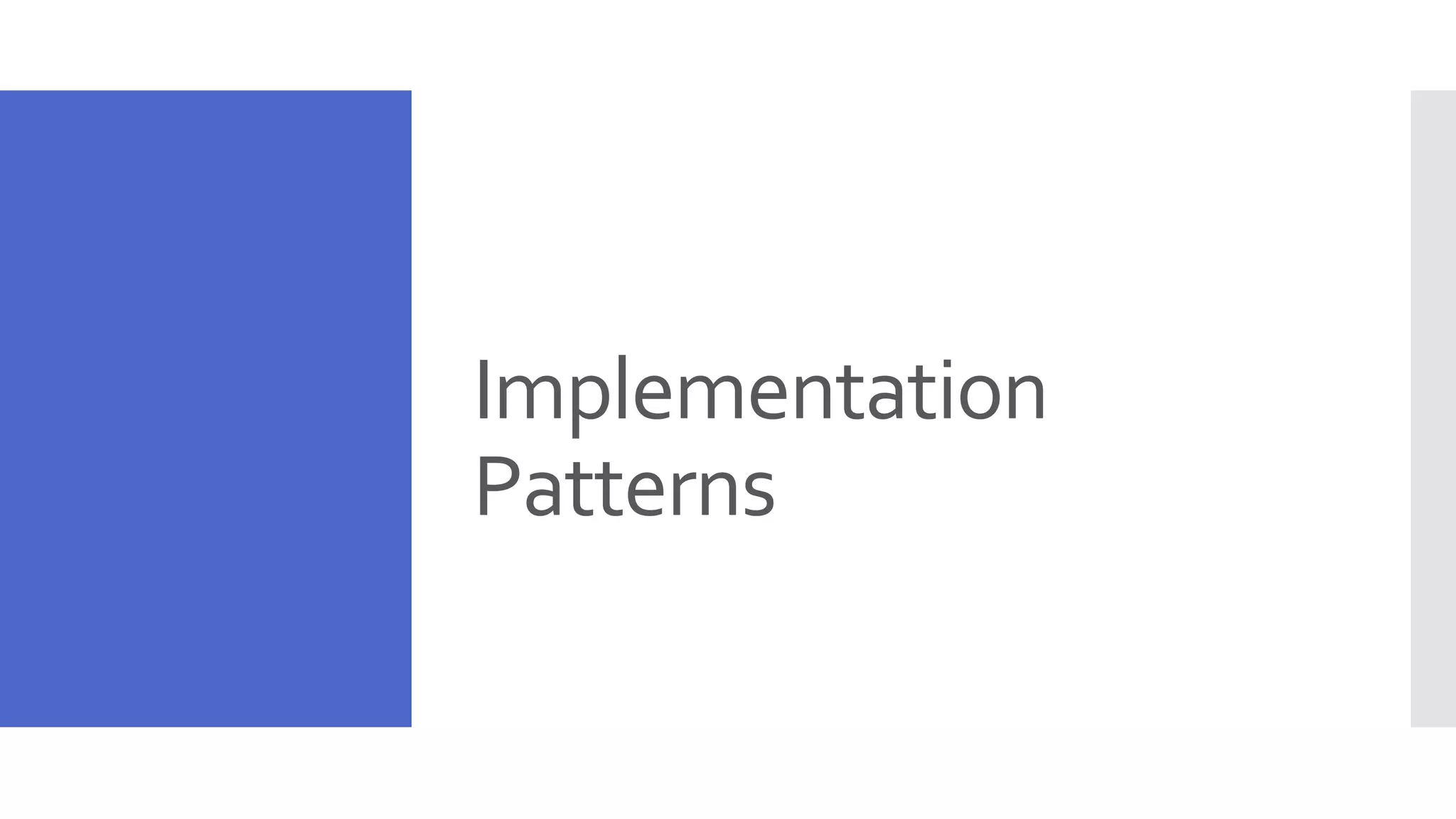
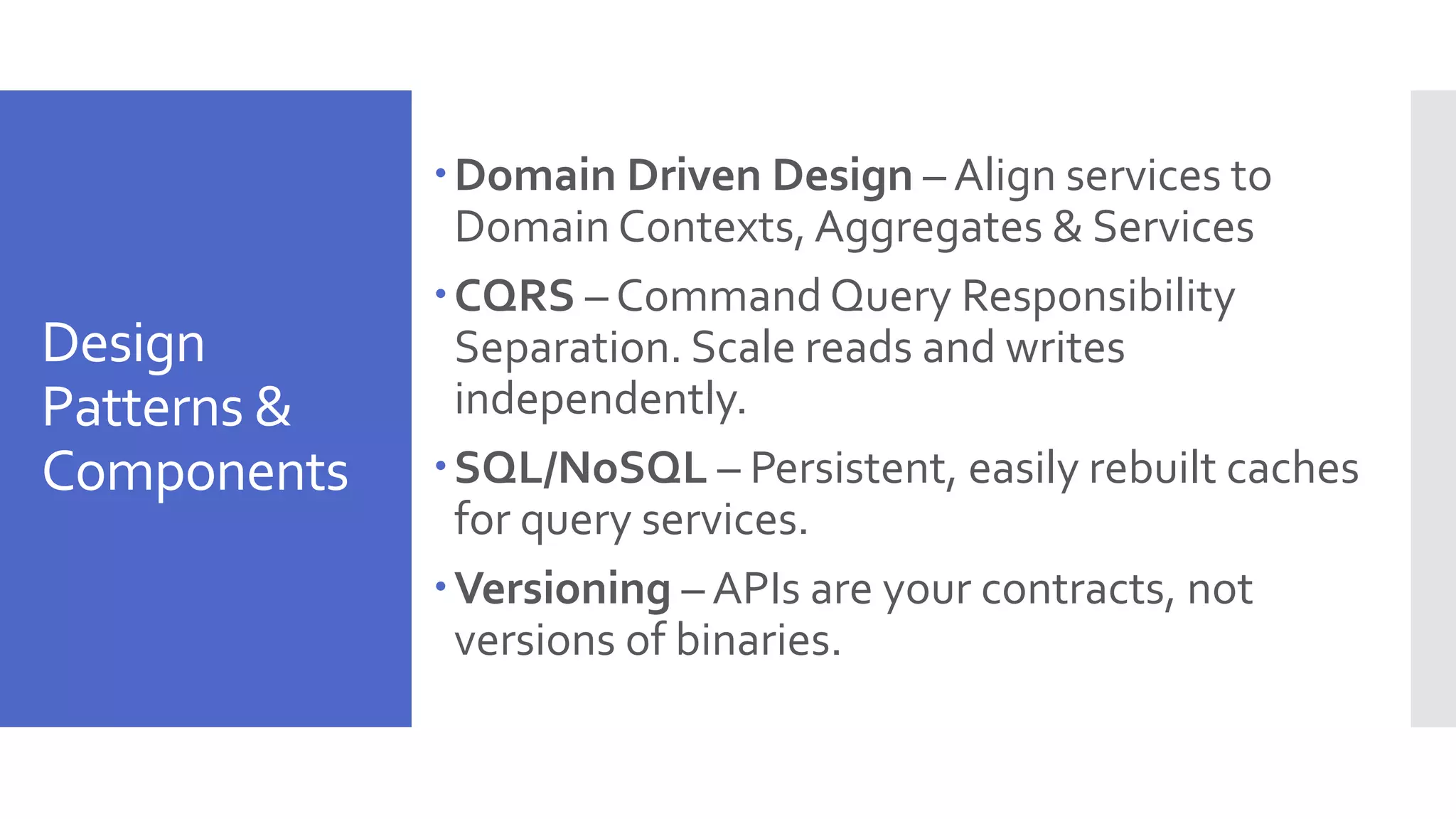

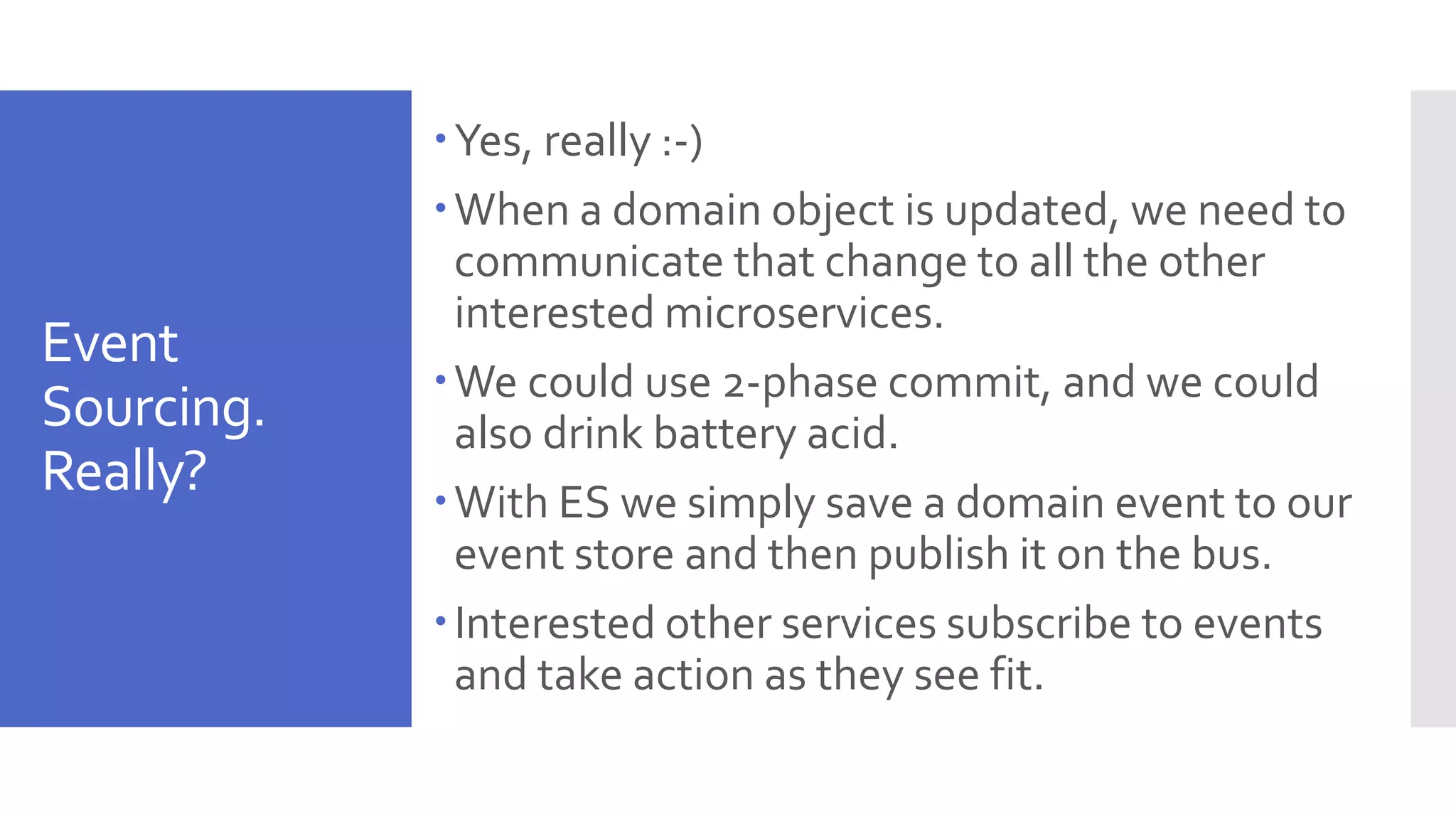

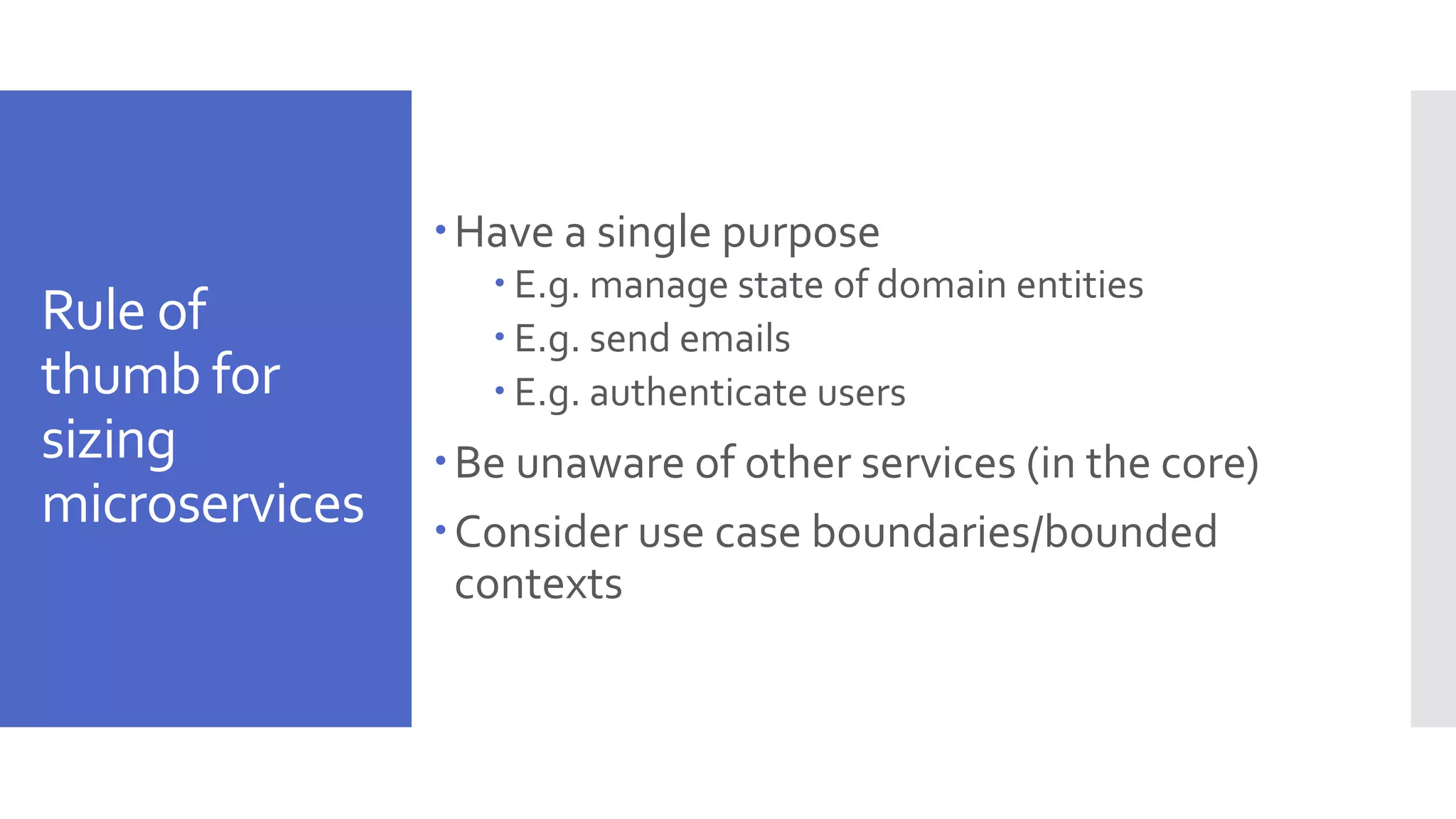

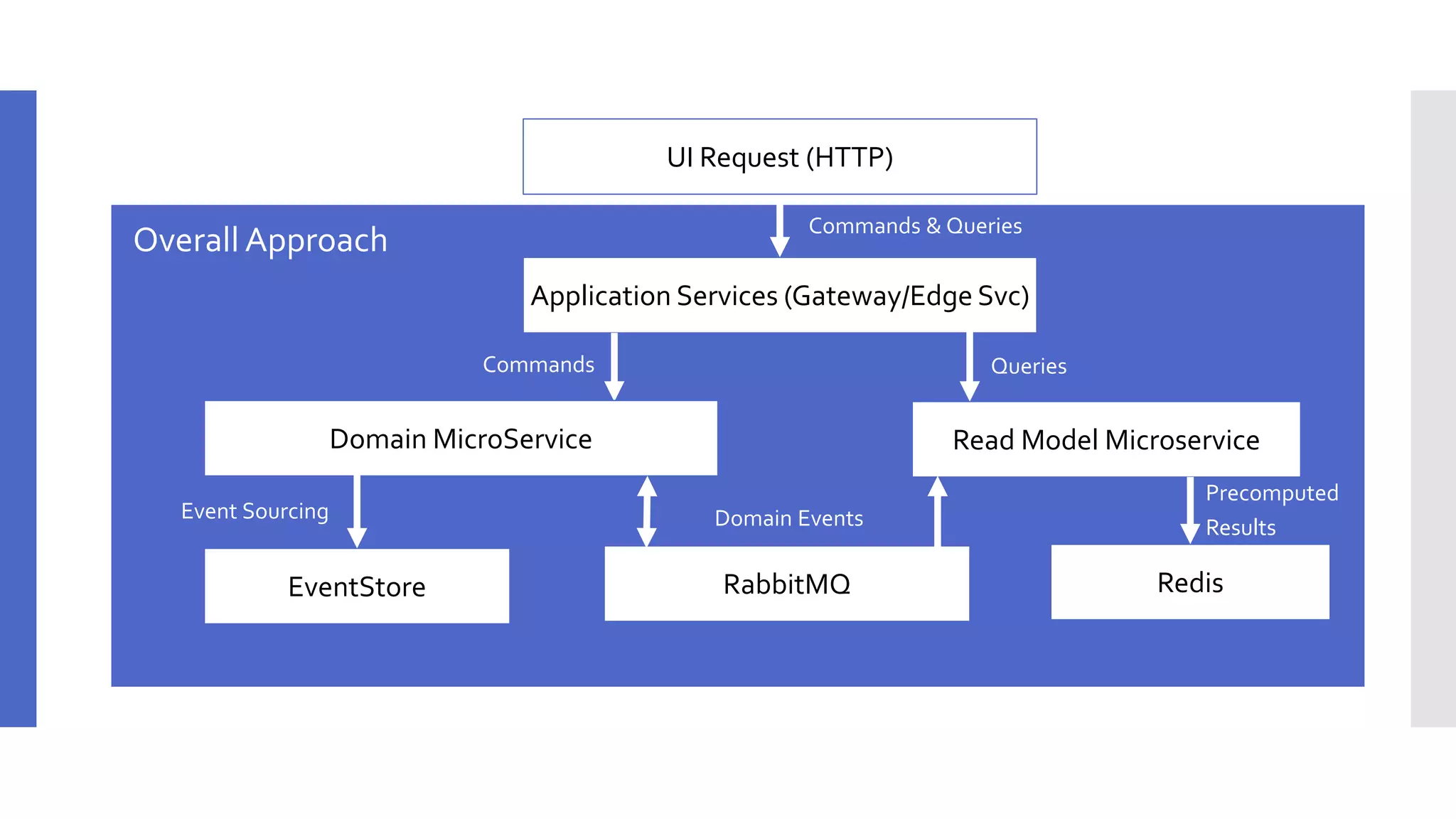
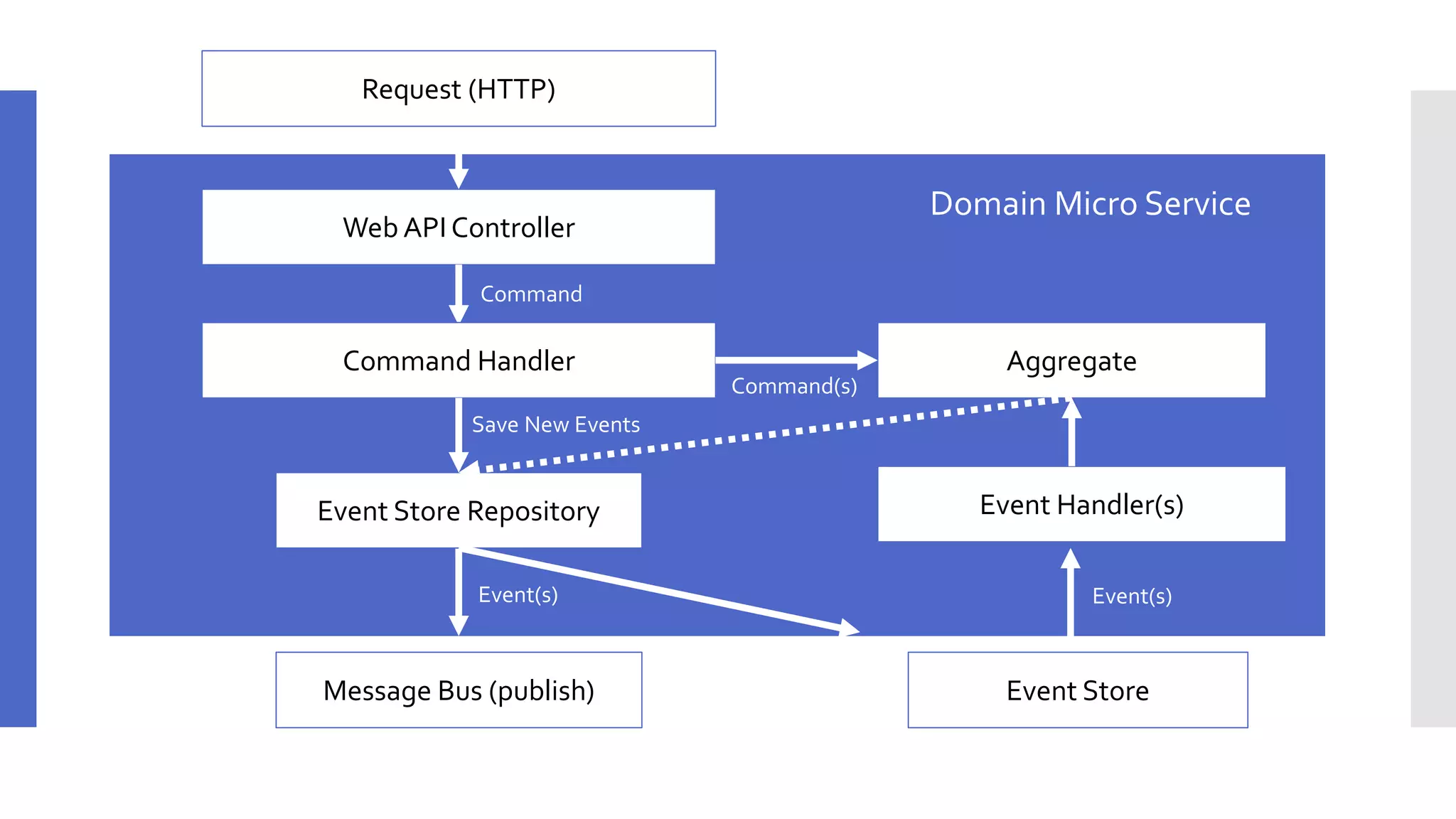
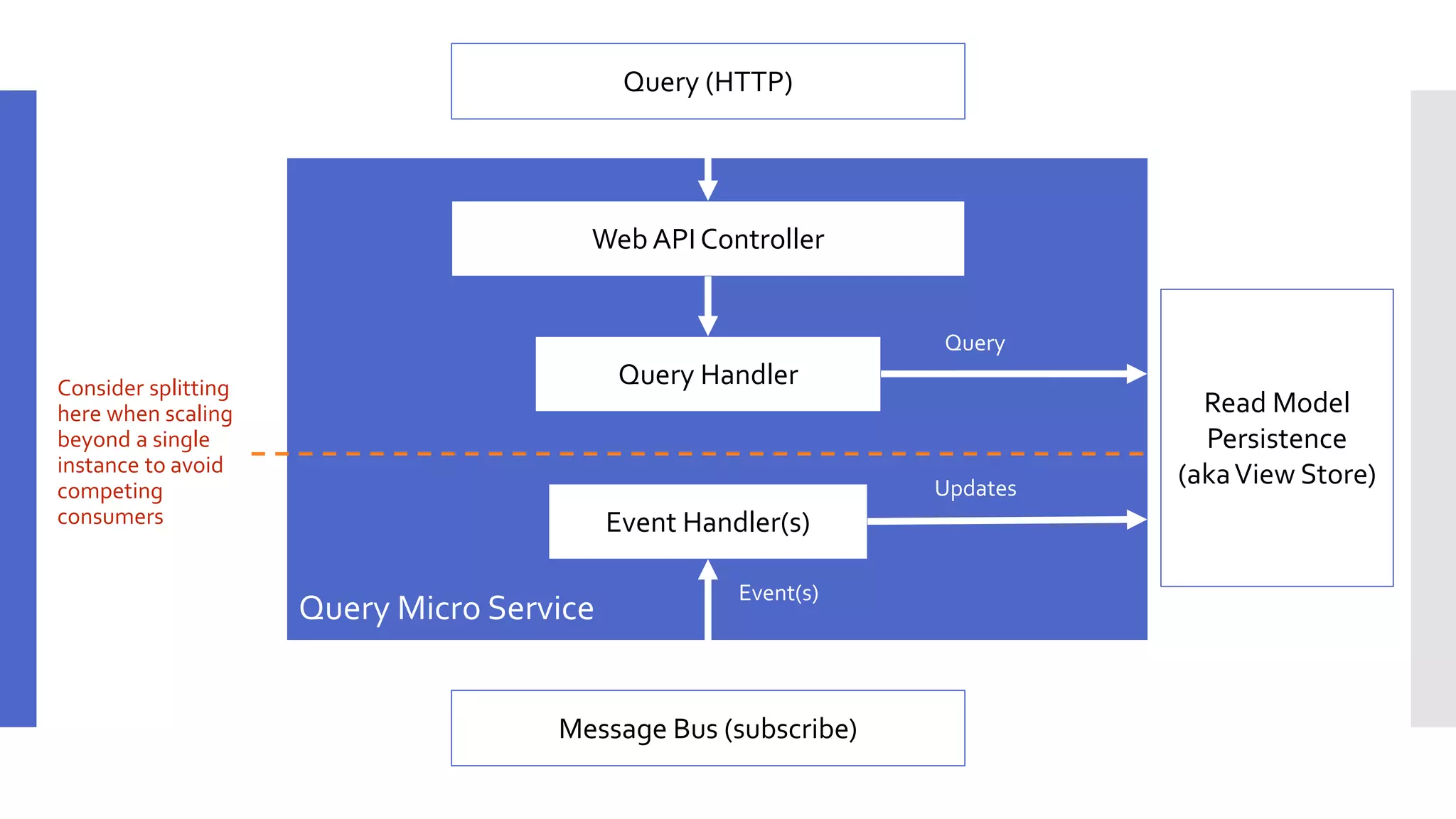
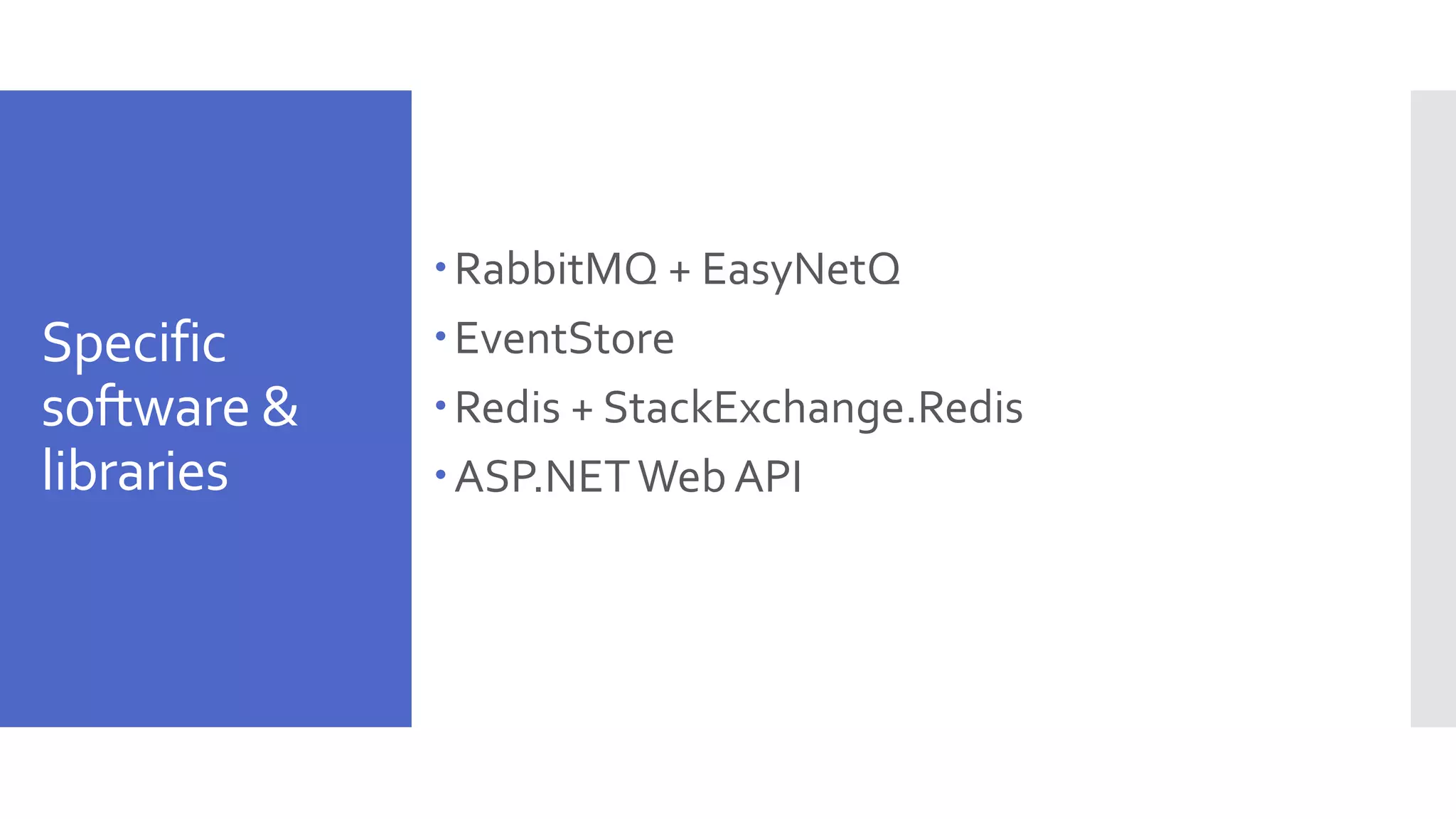

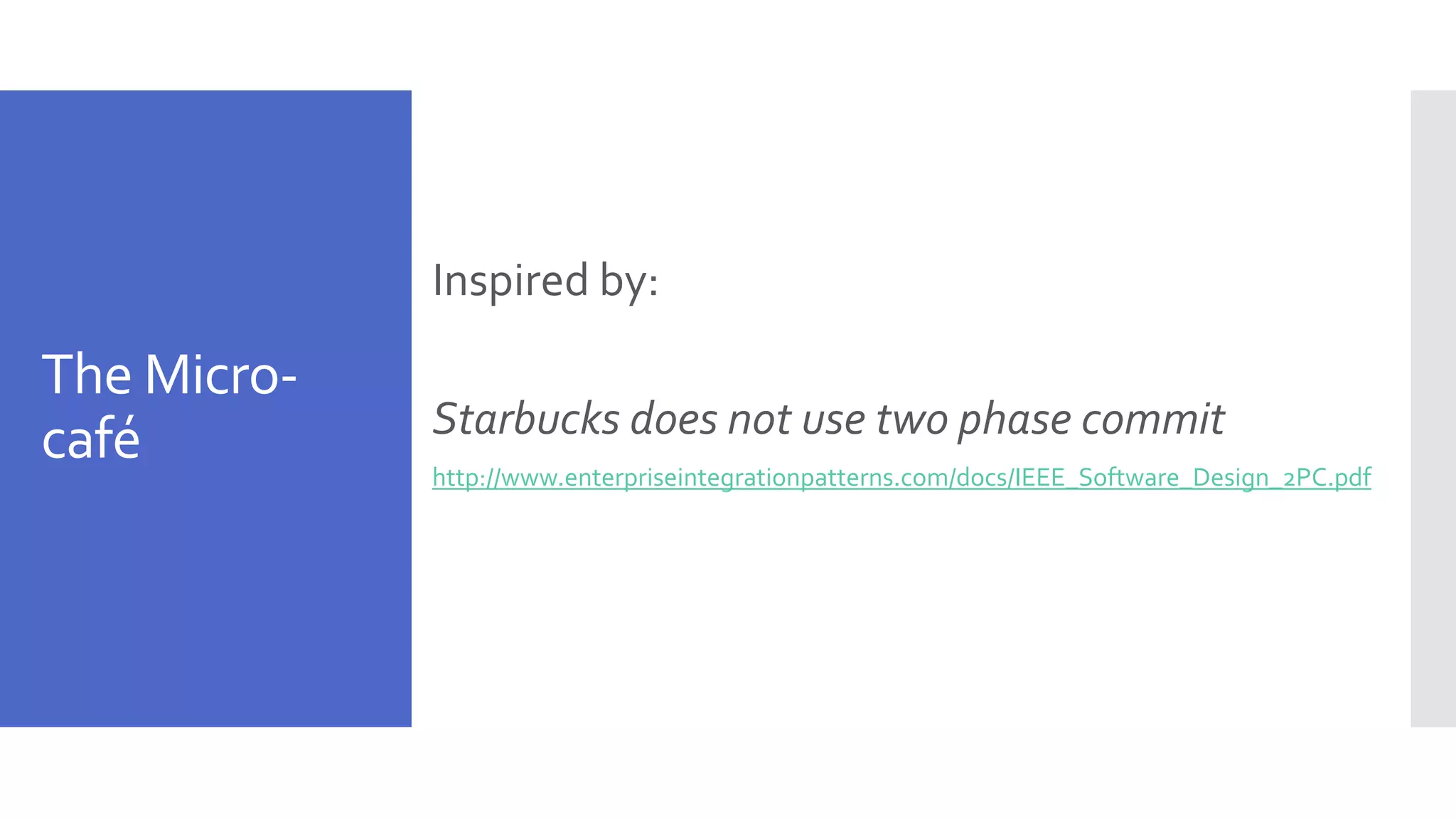
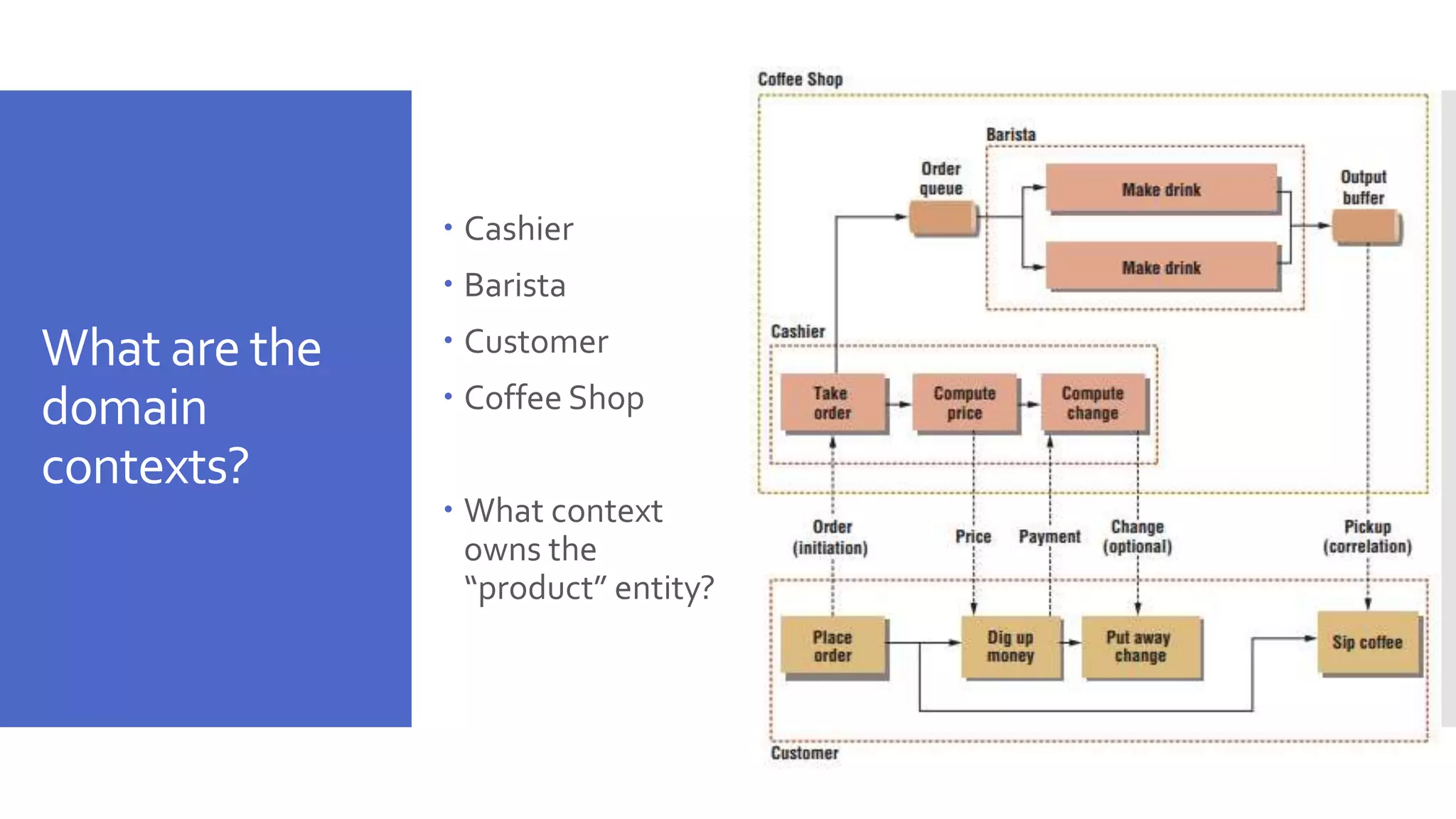
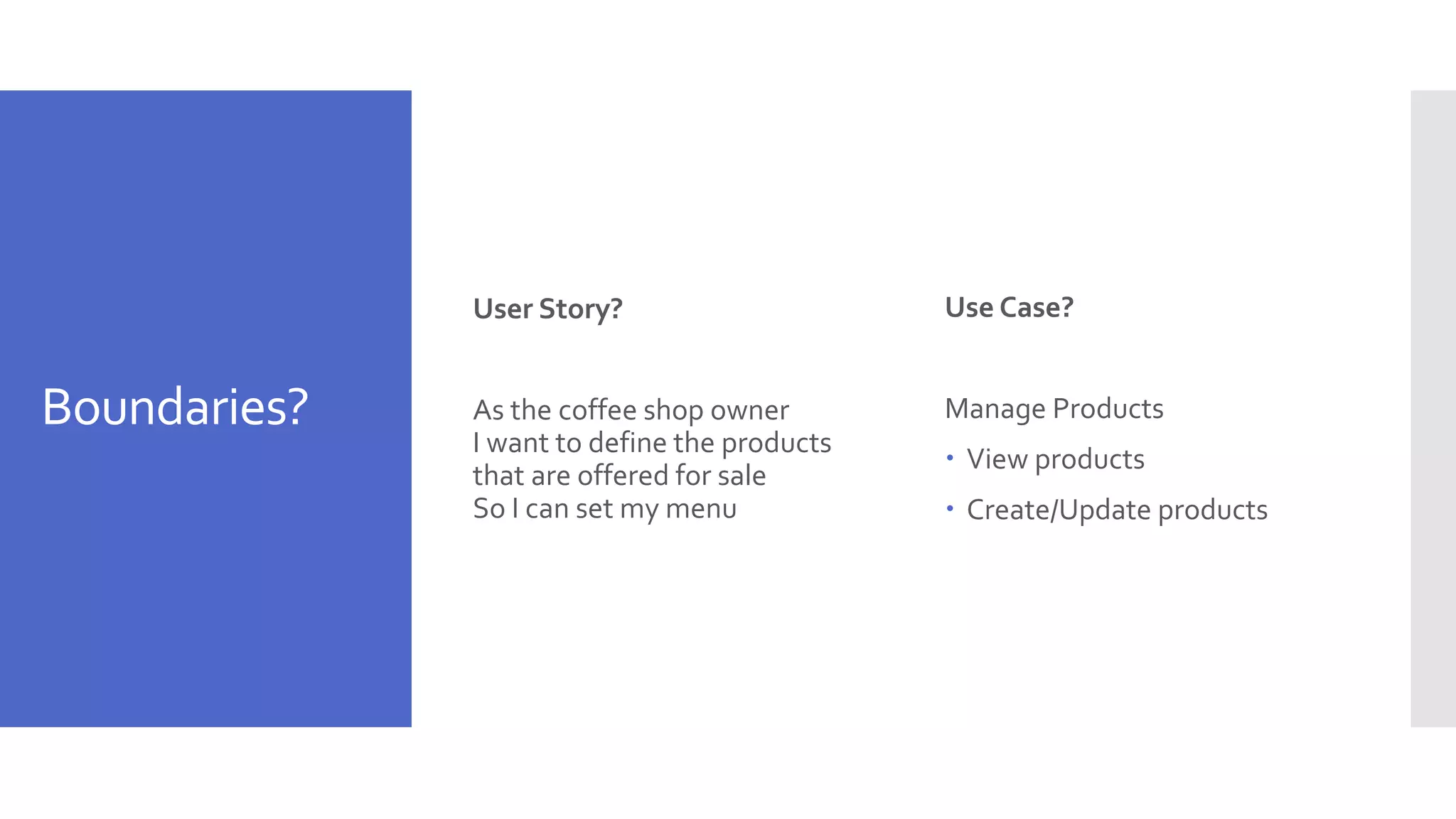



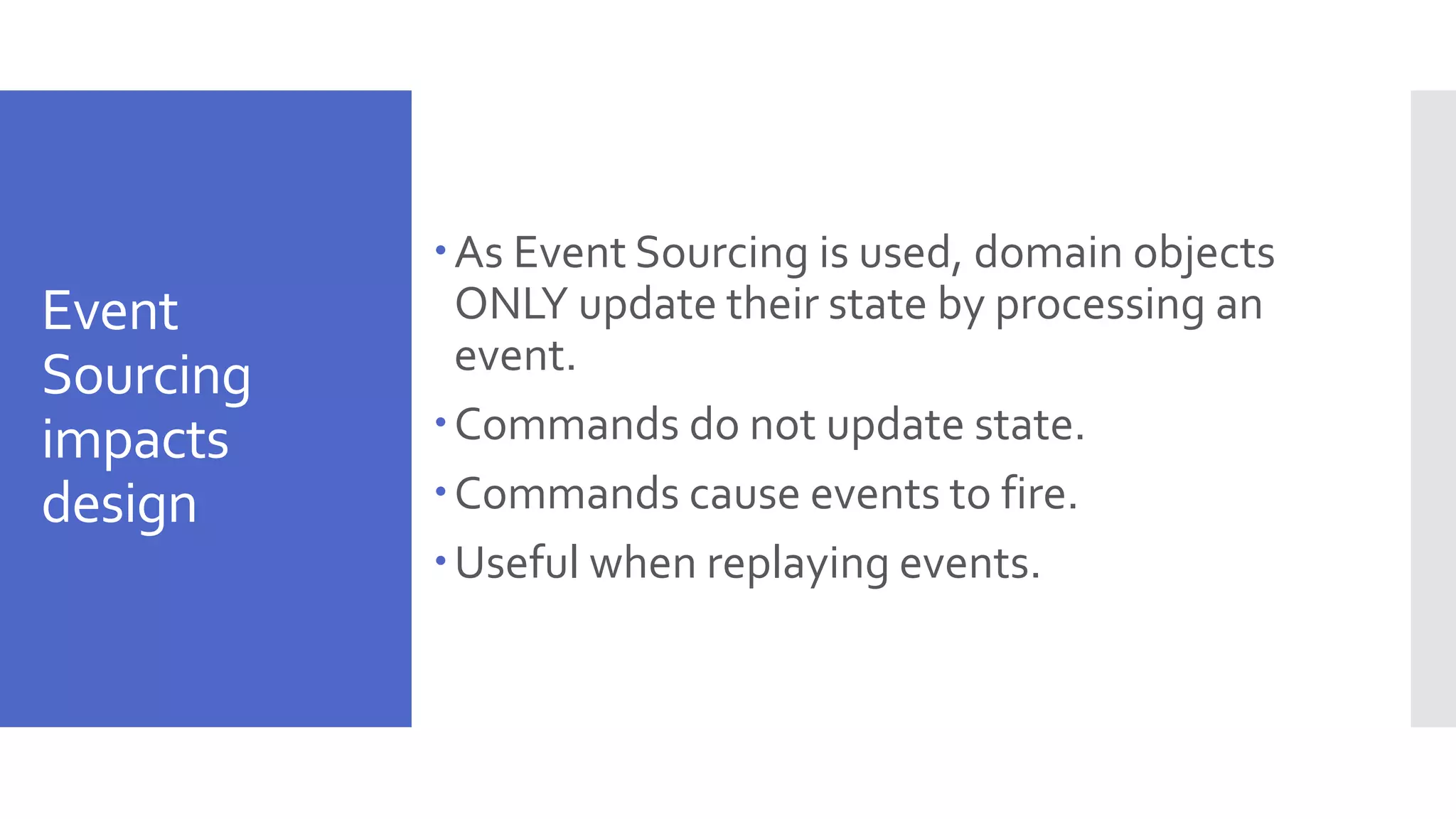
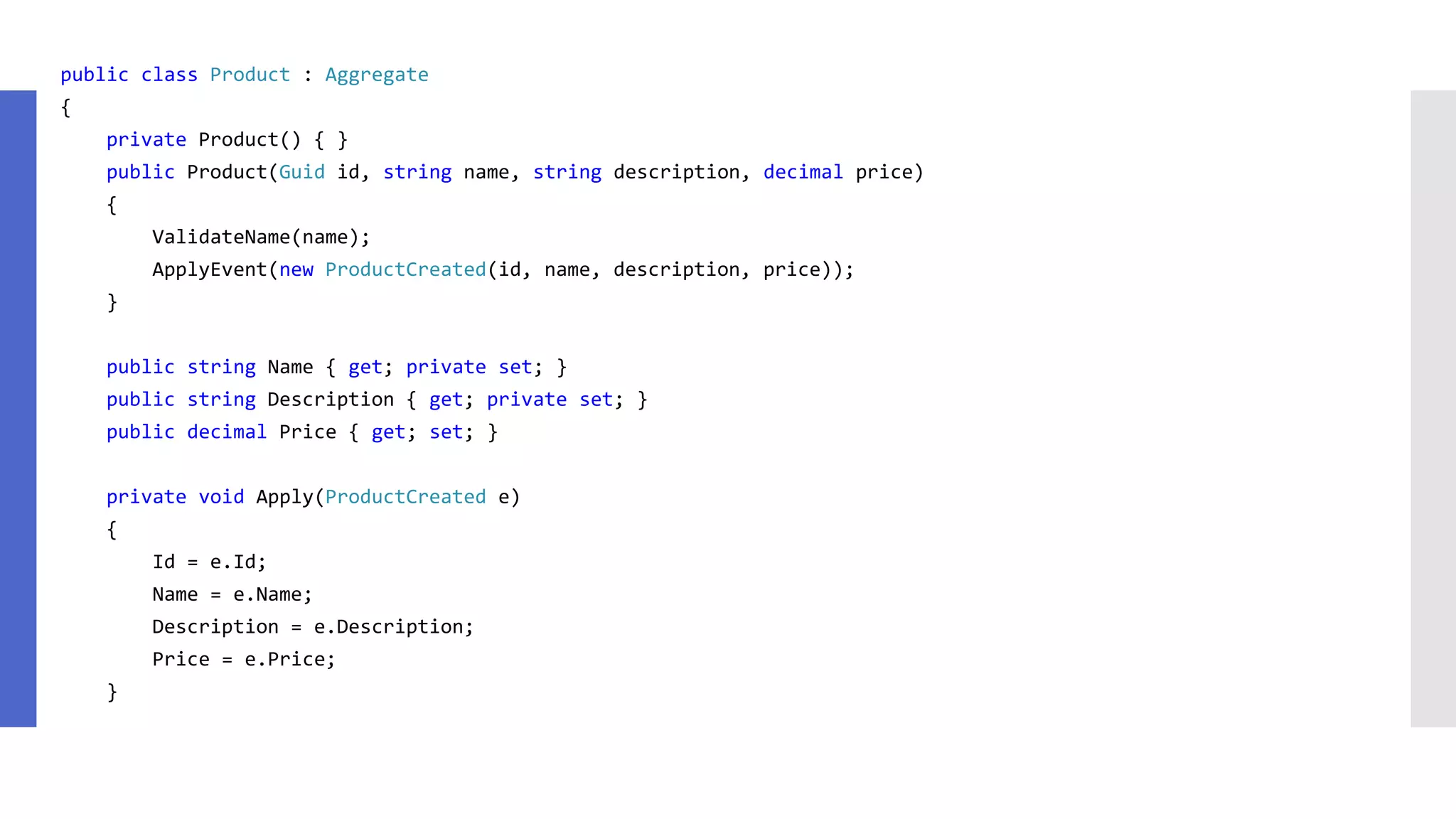
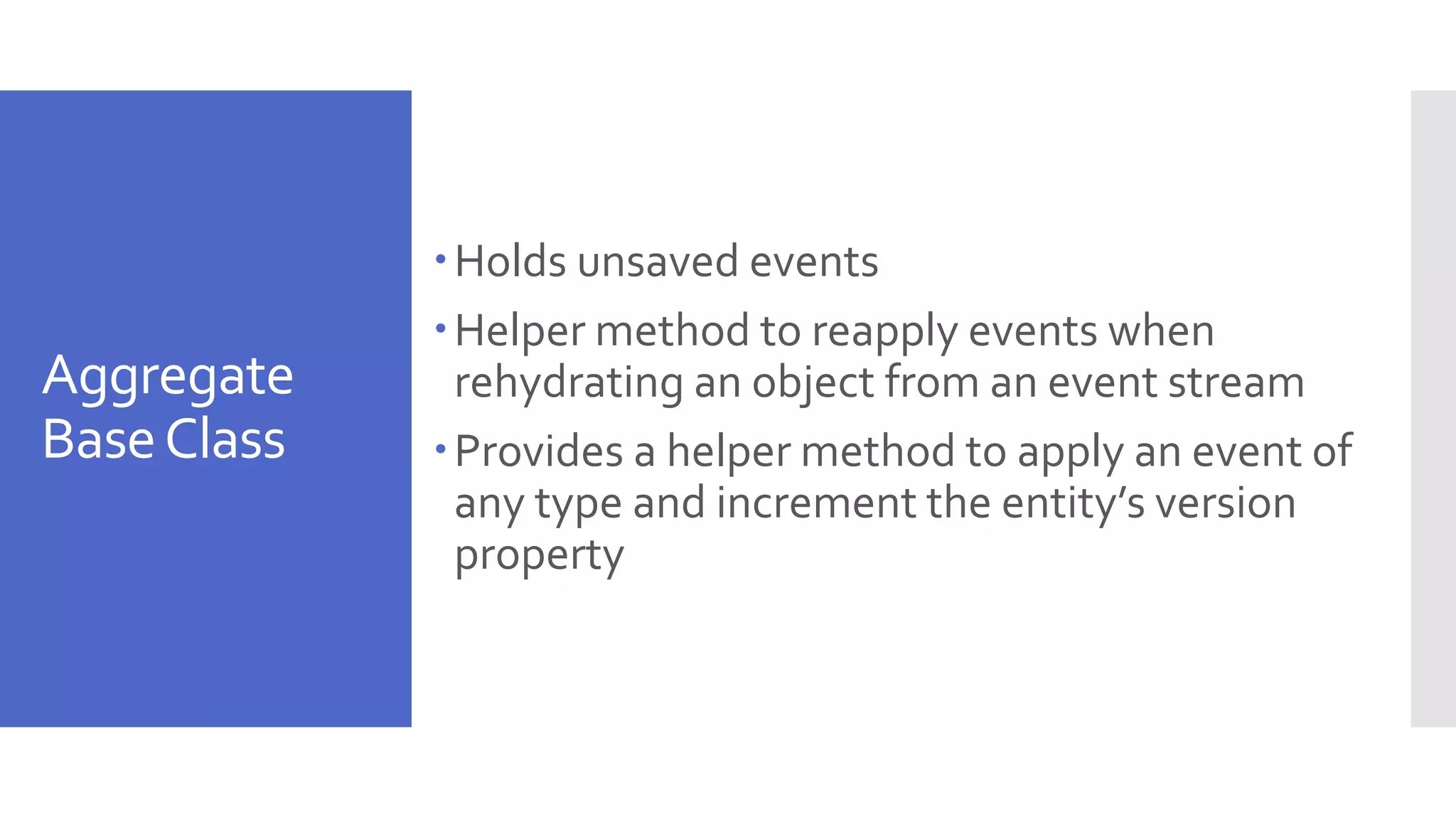
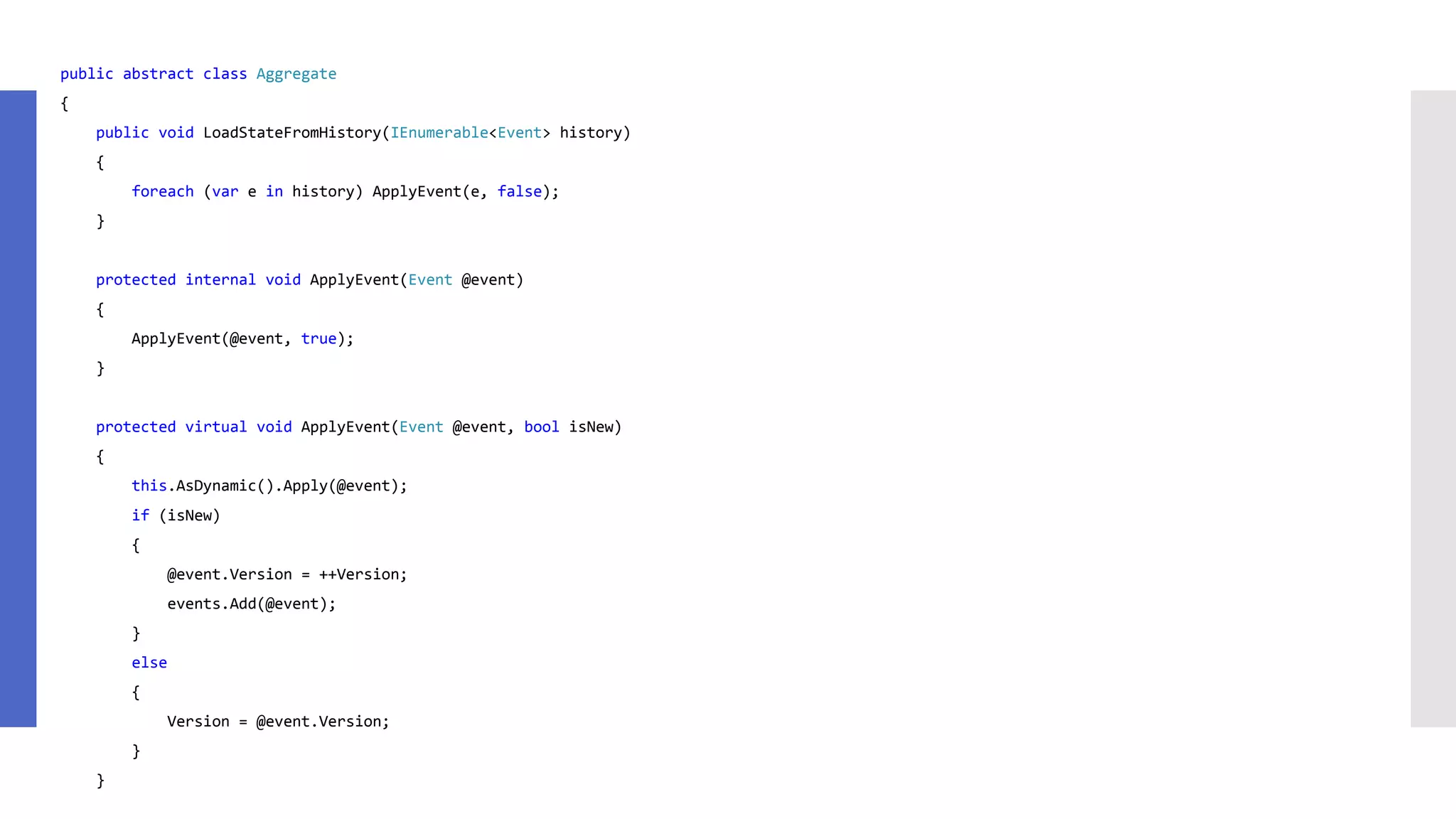


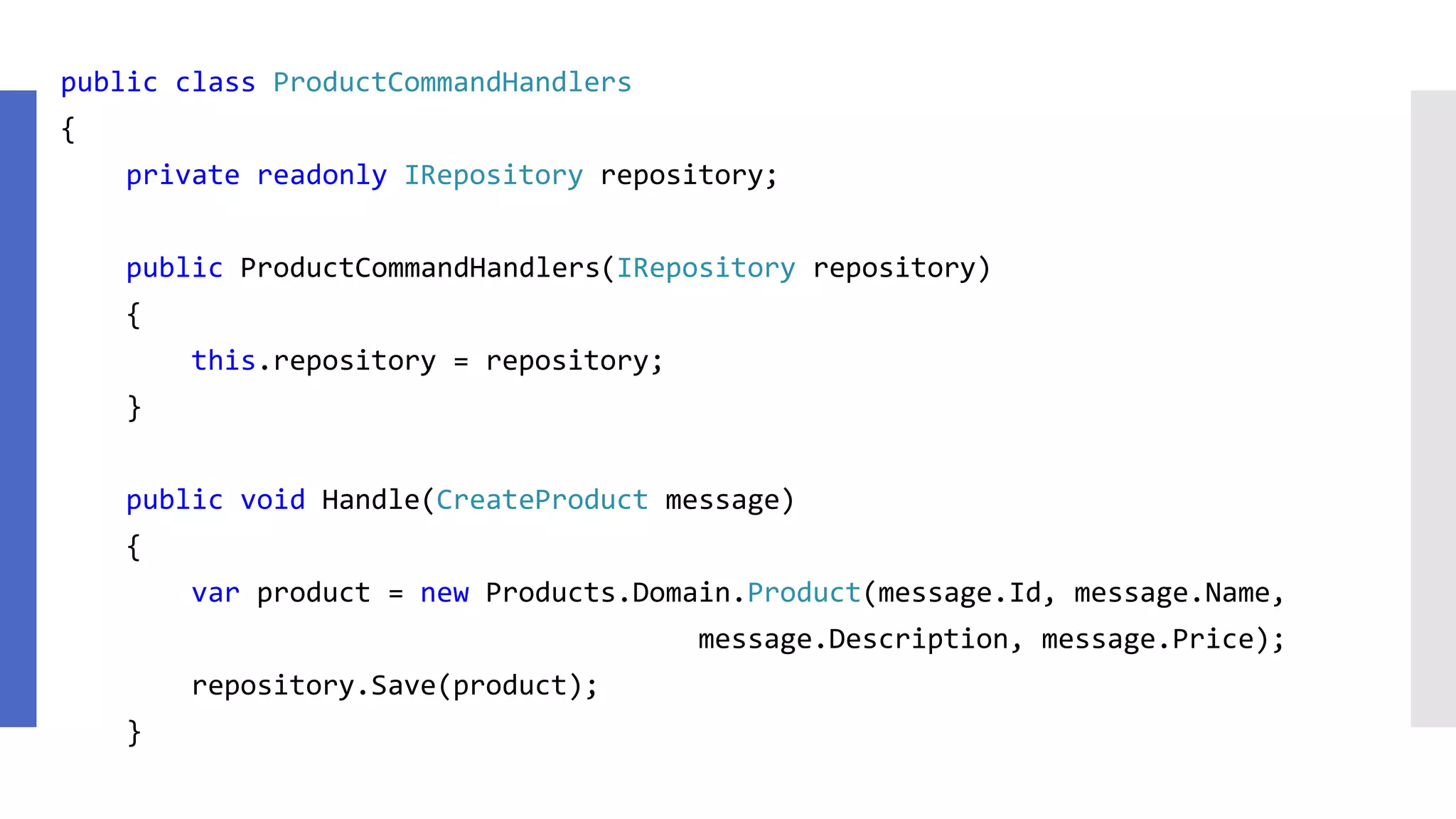

![[HttpPost] public IHttpActionResult Post(CreateProductCommand cmd) { if (string.IsNullOrWhiteSpace(cmd.Name)) { var response = new HttpResponseMessage(HttpStatusCode.Forbidden) { //… } throw new HttpResponseException(response); } try { var command = new CreateProduct(Guid.NewGuid(), cmd.Name, cmd.Description, cmd.Price); handler.Handle(command); var link = new Uri(string.Format("http://localhost:8181/api/products/{0}", command.Id)); return Created<CreateProduct>(link, command); } catch (AggregateNotFoundException) { return NotFound(); } catch (AggregateDeletedException) { return Conflict(); } }](https://image.slidesharecdn.com/microservicesin-160528005224/75/Architecting-Microservices-in-Net-50-2048.jpg)
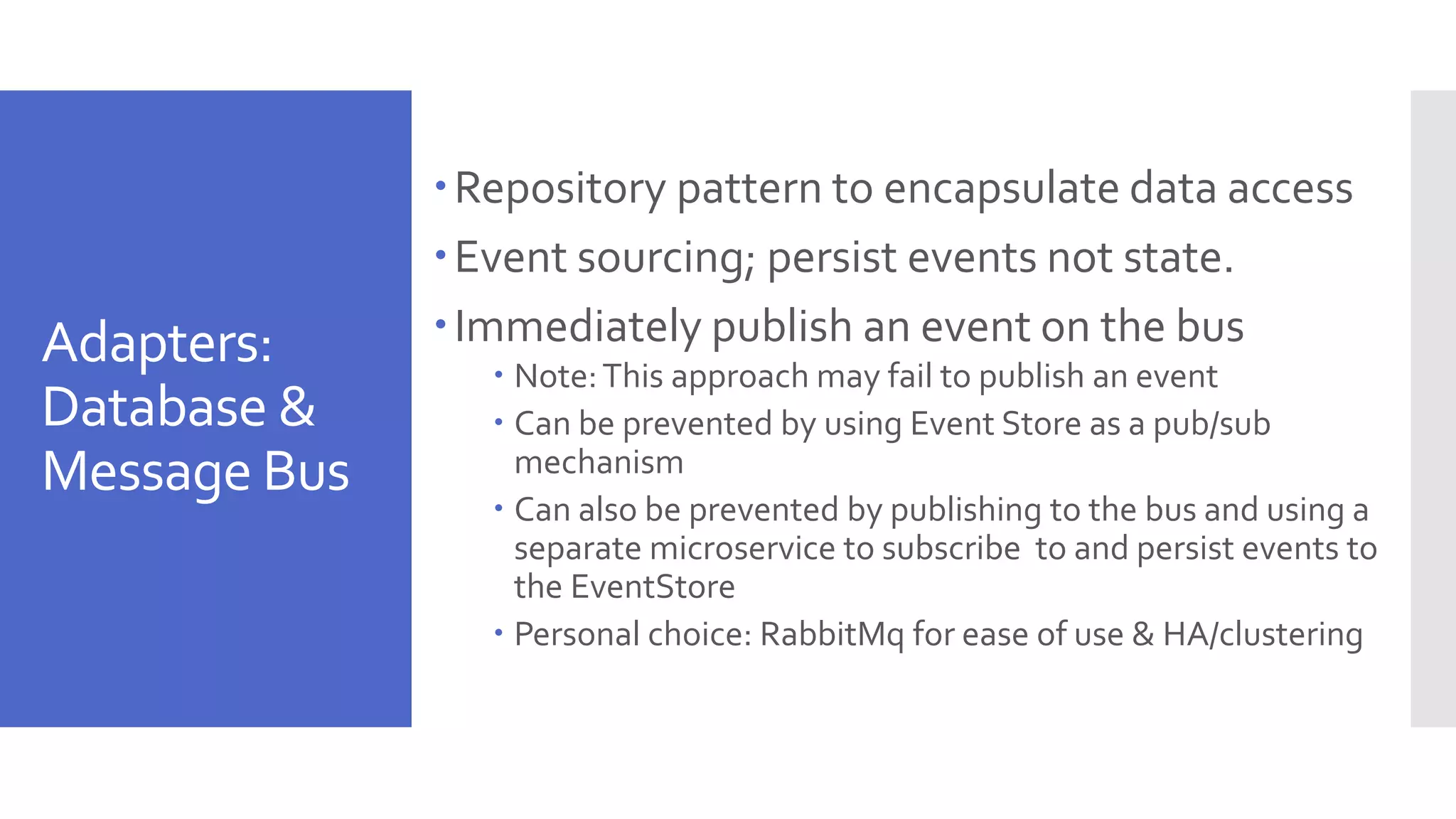
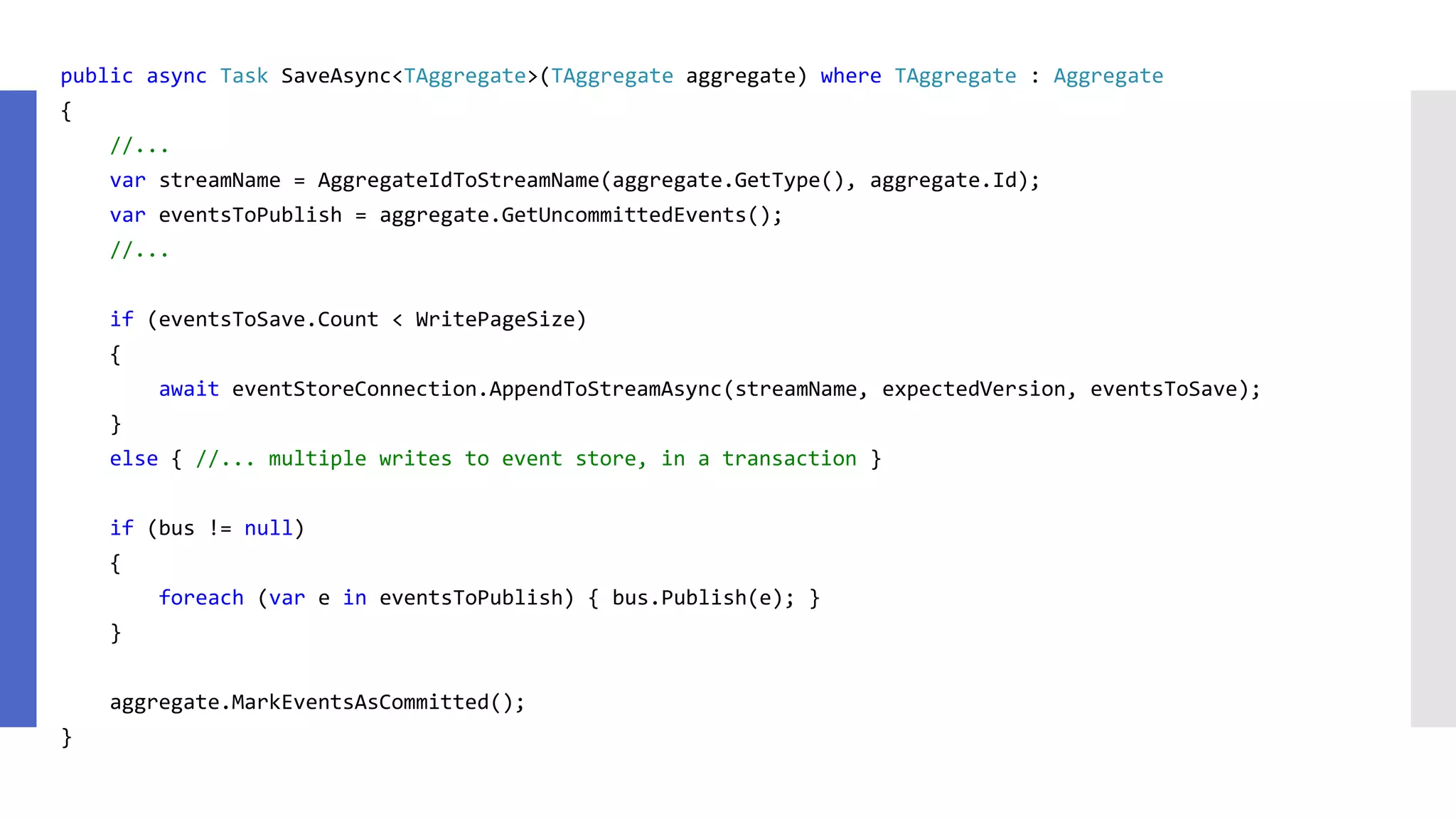


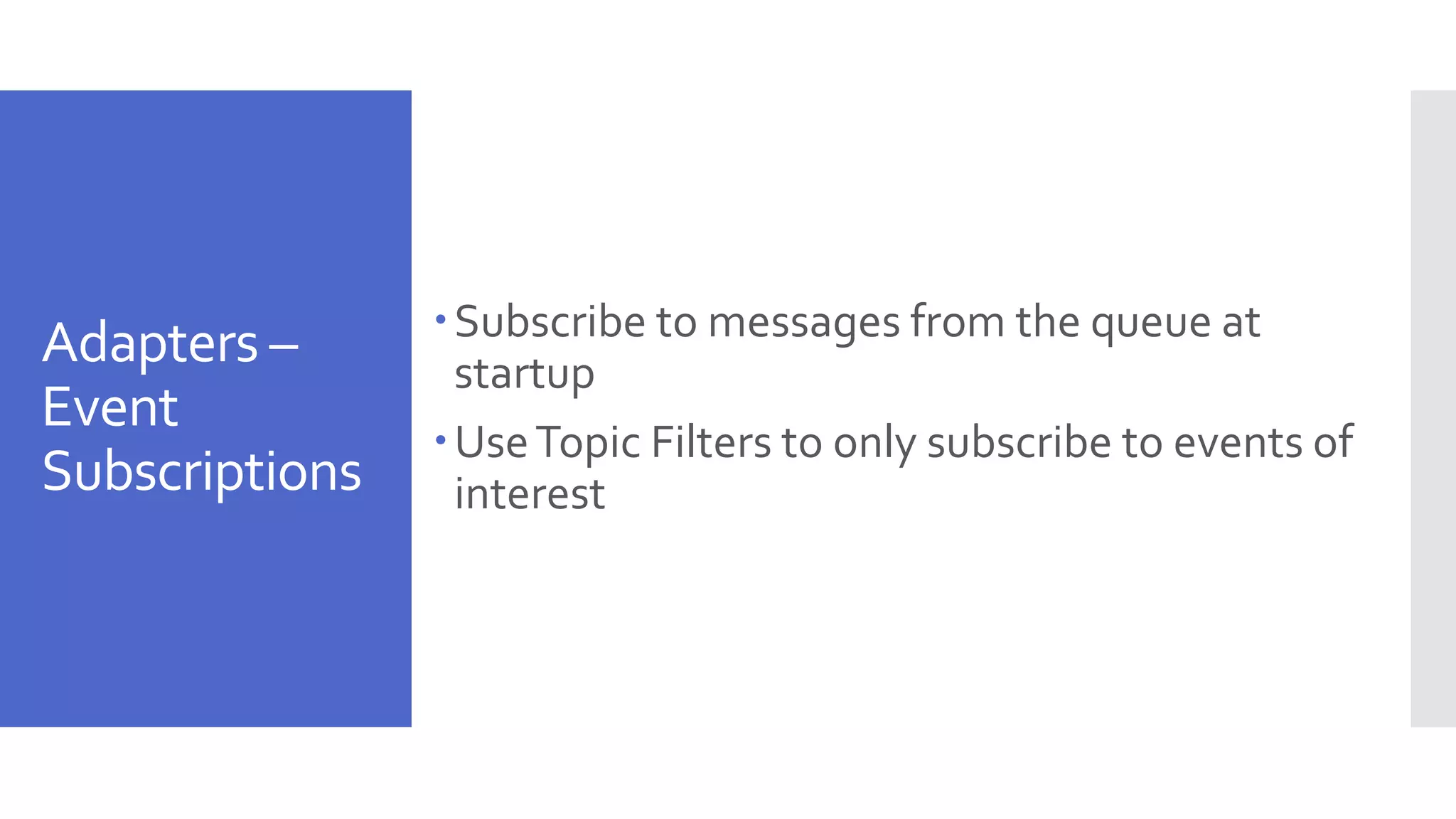
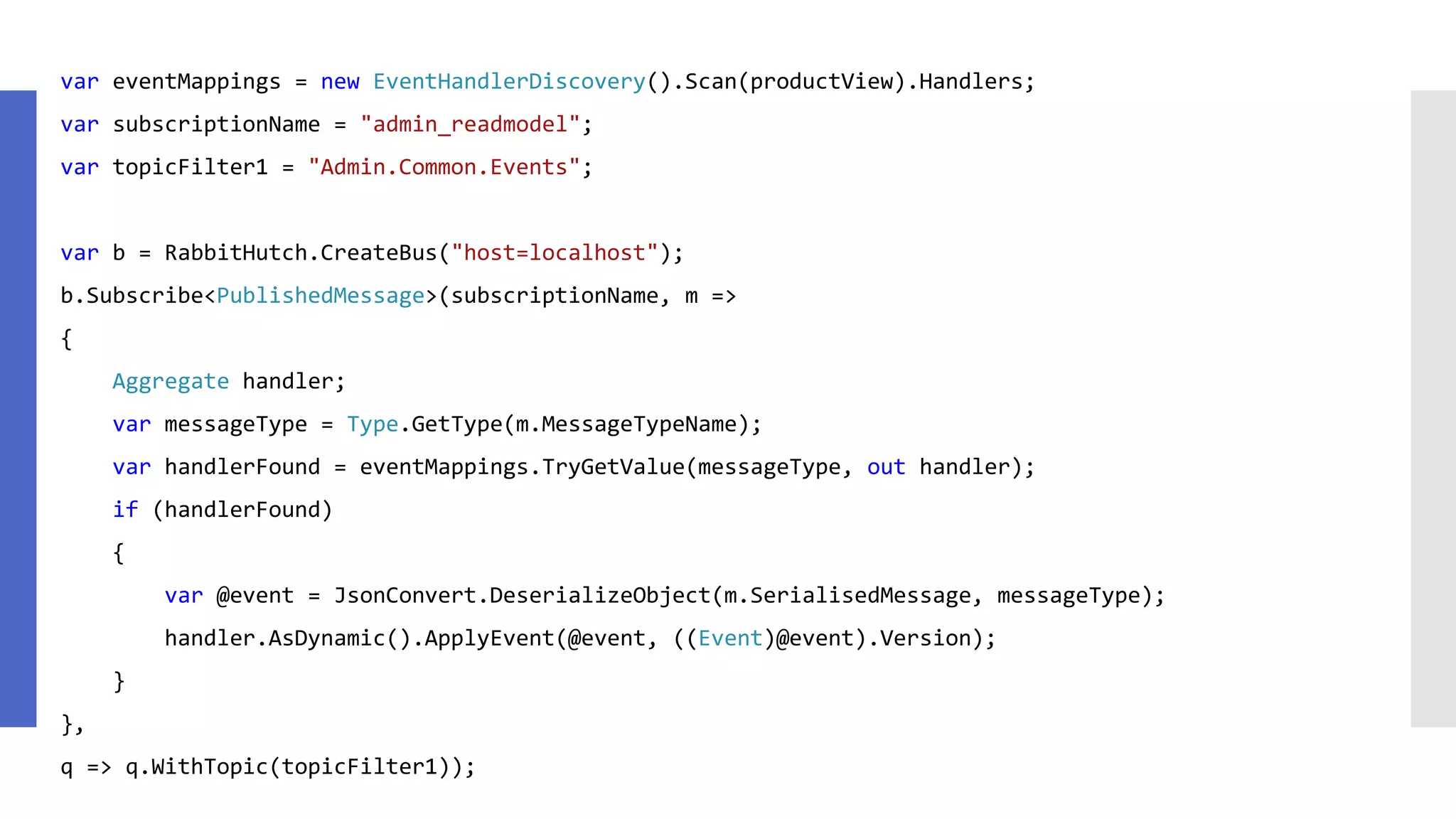
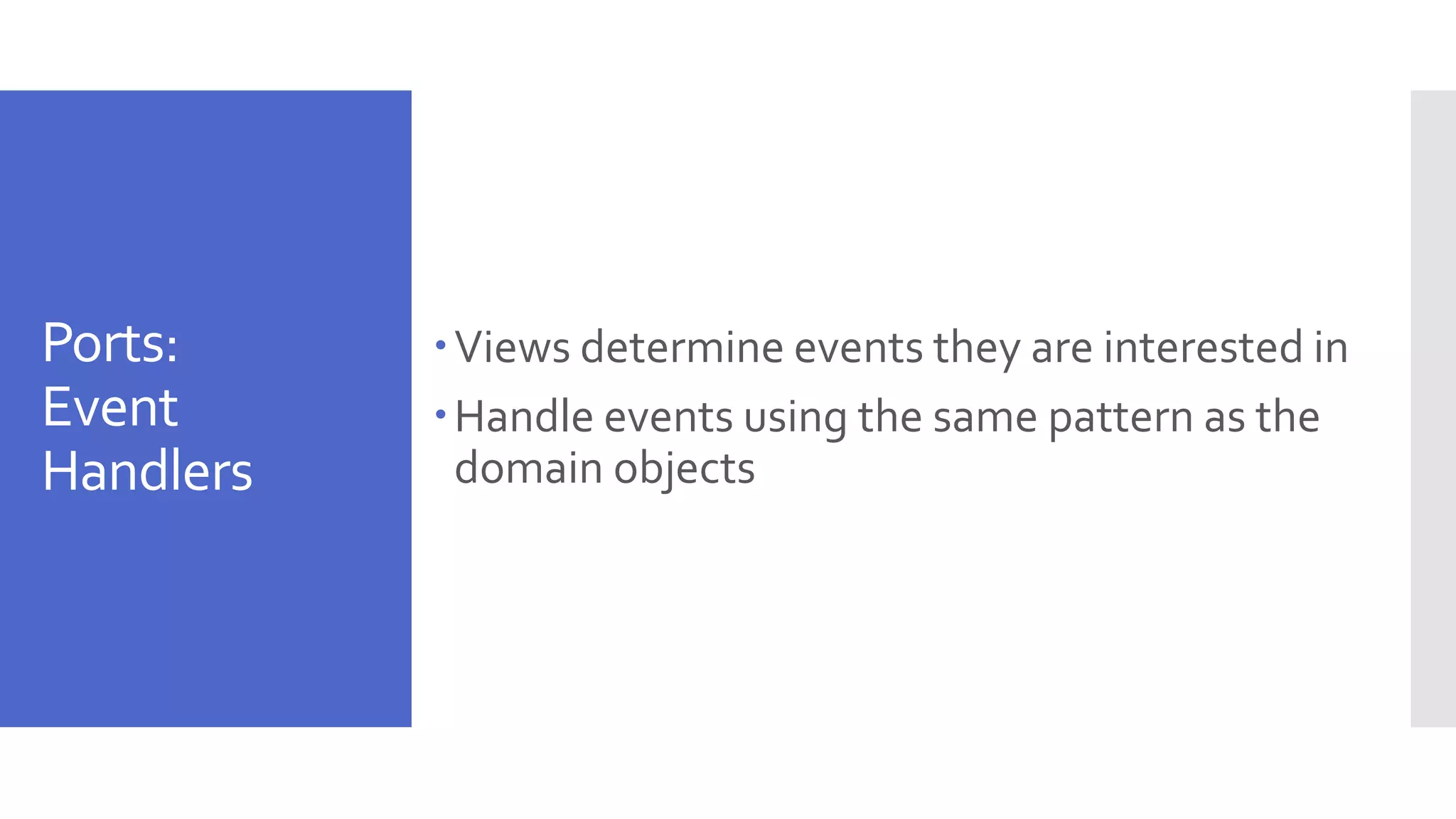
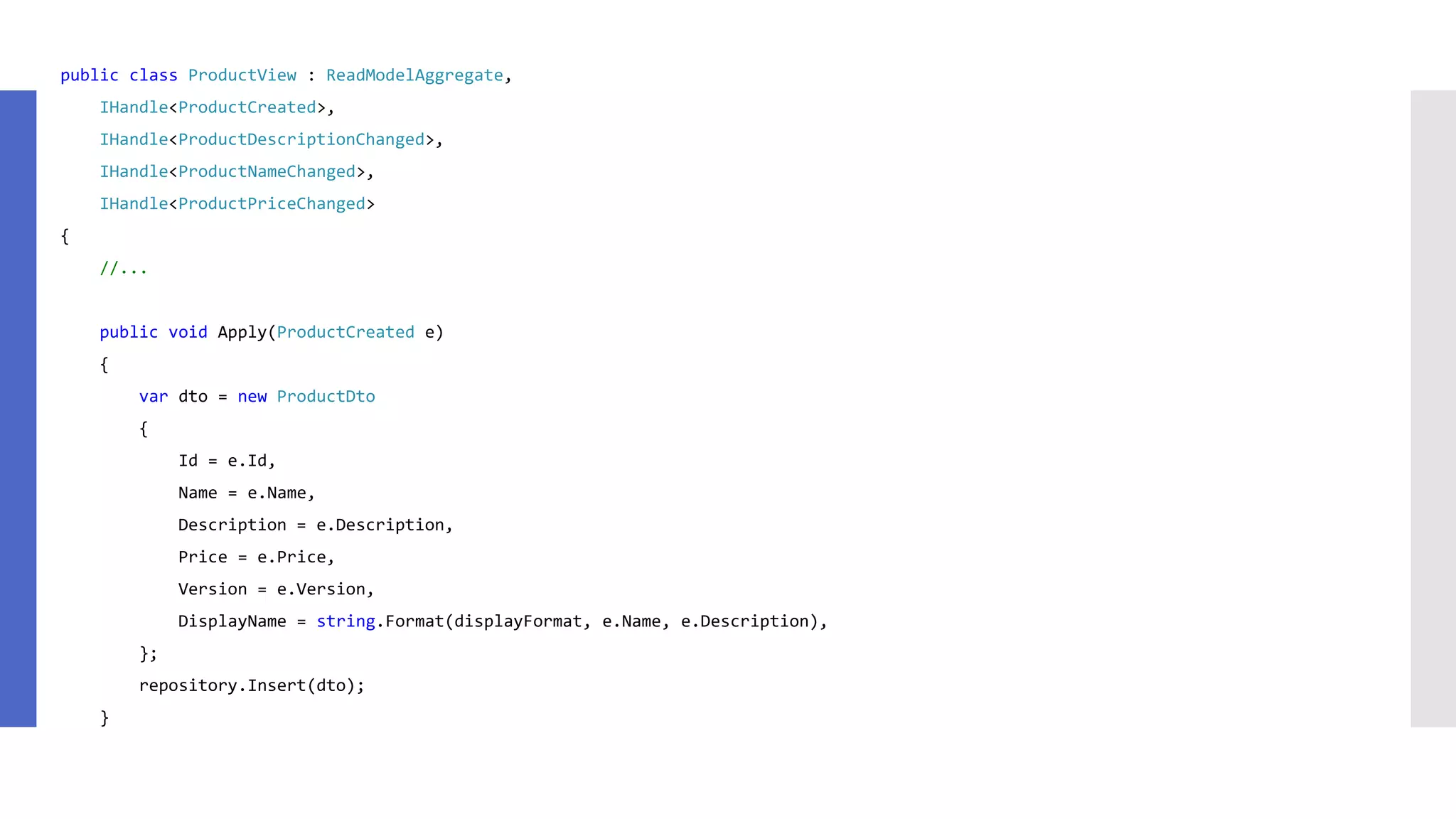
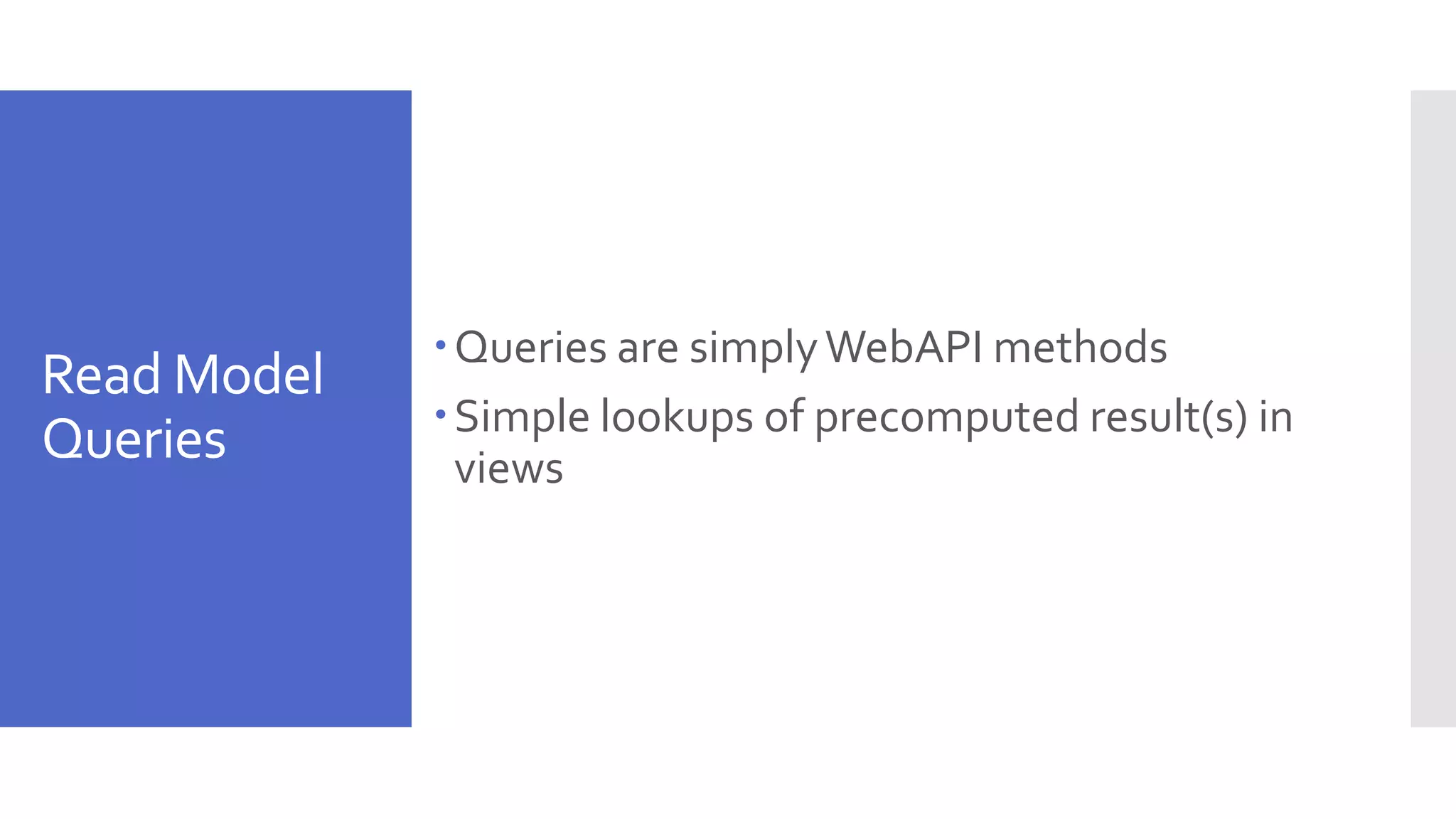
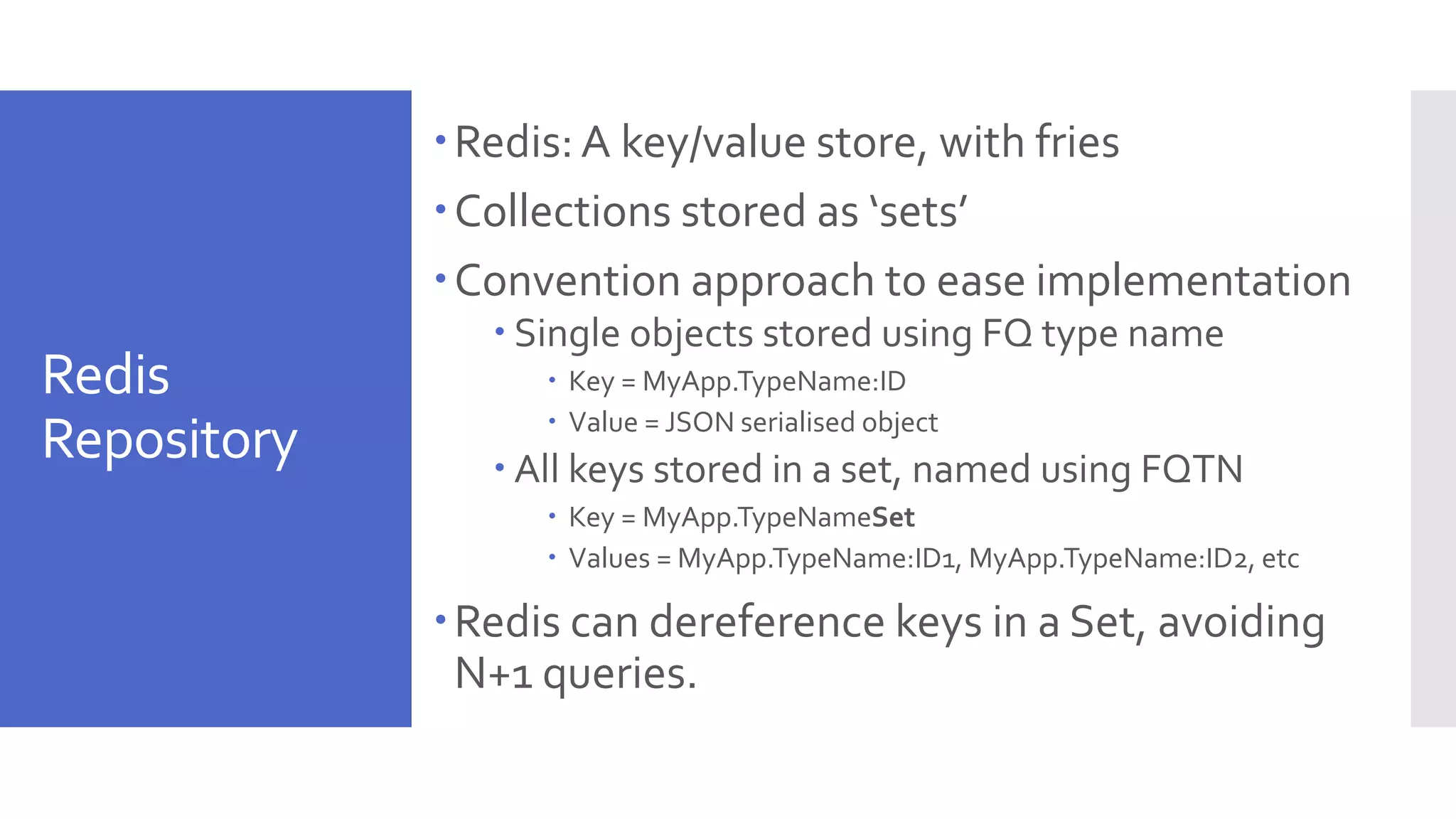
![public IEnumerable<T> GetAll() { var get = new RedisValue[] { InstanceName() + "*" }; var result = database.SortAsync(SetName(), sortType: SortType.Alphabetic, by: "nosort", get: get).Result; var readObjects = result.Select(v => JsonConvert.DeserializeObject<T>(v)).AsEnumerable(); return readObjects; } public void Insert(T t) { var serialised = JsonConvert.SerializeObject(t); var key = Key(t.Id); var transaction = database.CreateTransaction(); transaction.StringSetAsync(key, serialised); transaction.SetAddAsync(SetName(), t.Id.ToString("N")); var committed = transaction.ExecuteAsync().Result; if (!committed) { throw new ApplicationException("transaction failed. Now what?"); } }](https://image.slidesharecdn.com/microservicesin-160528005224/75/Architecting-Microservices-in-Net-61-2048.jpg)



